- Excellent new interior technology a big step up on previous models
- Impressive real world fuel efficiency
- Practical and spacious cabin
- Some equipment missing
- Interior doesn't feel as premium as competitors
- Extremely long wait times
If three things are a certainty in 2023, it’s death, taxes and borderline insane wait times for Toyota hybrids. This isn’t a new thing and wait times aren’t exclusive to Toyota, but it has certainly been a defining attribute of Toyota’s best selling hybrid vehicle: the RAV4. Released back in 2019, the current generation RAV4 has been highly successful for Toyota, being the best selling non-ute vehicle locally in 2020, 2021 and 2022. Since 2019, Toyota has given the RAV4 several spec updates, in lieu of any facelift and we spent a week behind the wheel of one of the model year 2023 update variants: the 2023 Toyota RAV4 Cruiser 2WD Hybrid.
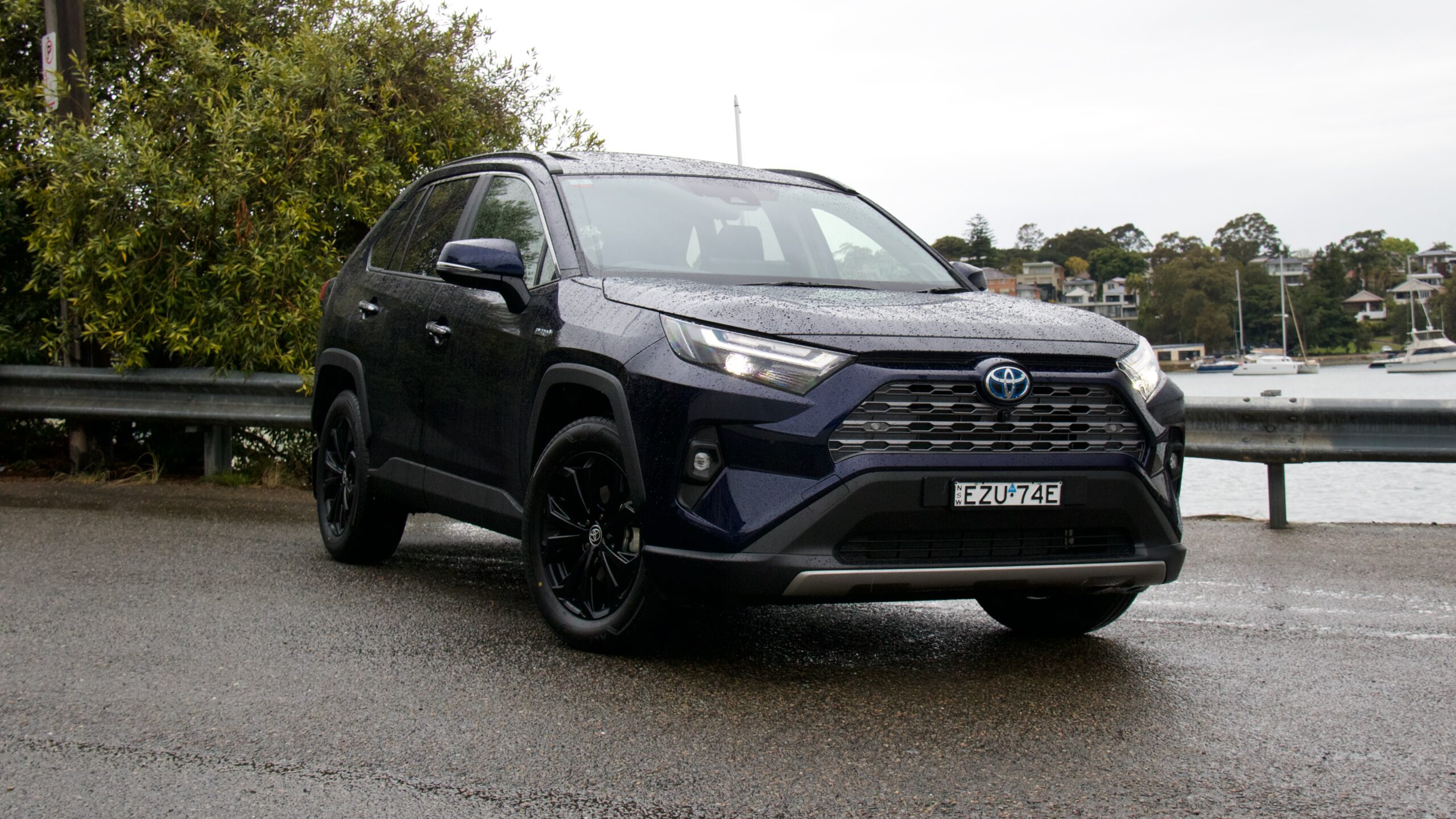
There is no shortage of other mid-sized SUVs on the market, and while the RAV4 used to be the singular hybrid option for Australian drivers, we’re finally starting to see an ever expanding array of alternatives. Toyota described the 2023 spec update as a safety and technology update, and we were curious to see if the upgrades have been enough to keep the RAV4 fresh enough in what is a highly competitive space. Has Toyota succeeded? Read on to see our thoughts after spending a week behind the wheel of the RAV4 Cruiser 2WD hybrid.
How much does the 2023 Toyota RAV4 Cruiser hybrid cost to buy?
Over the years, the RAV4 has gone up in price, and in 2023, it starts out at around $44,000 drive away for the base GX petrol 2WD. The hybrid range starts out at around $46,500 drive away and the range tops out with the flagship Edge AWD hybrid for around $63,500 drive away. Our model on test, the 2023 Toyota RAV4 Cruiser 2WD Hybrid with premium paint, comes in at around $56,800 drive away.
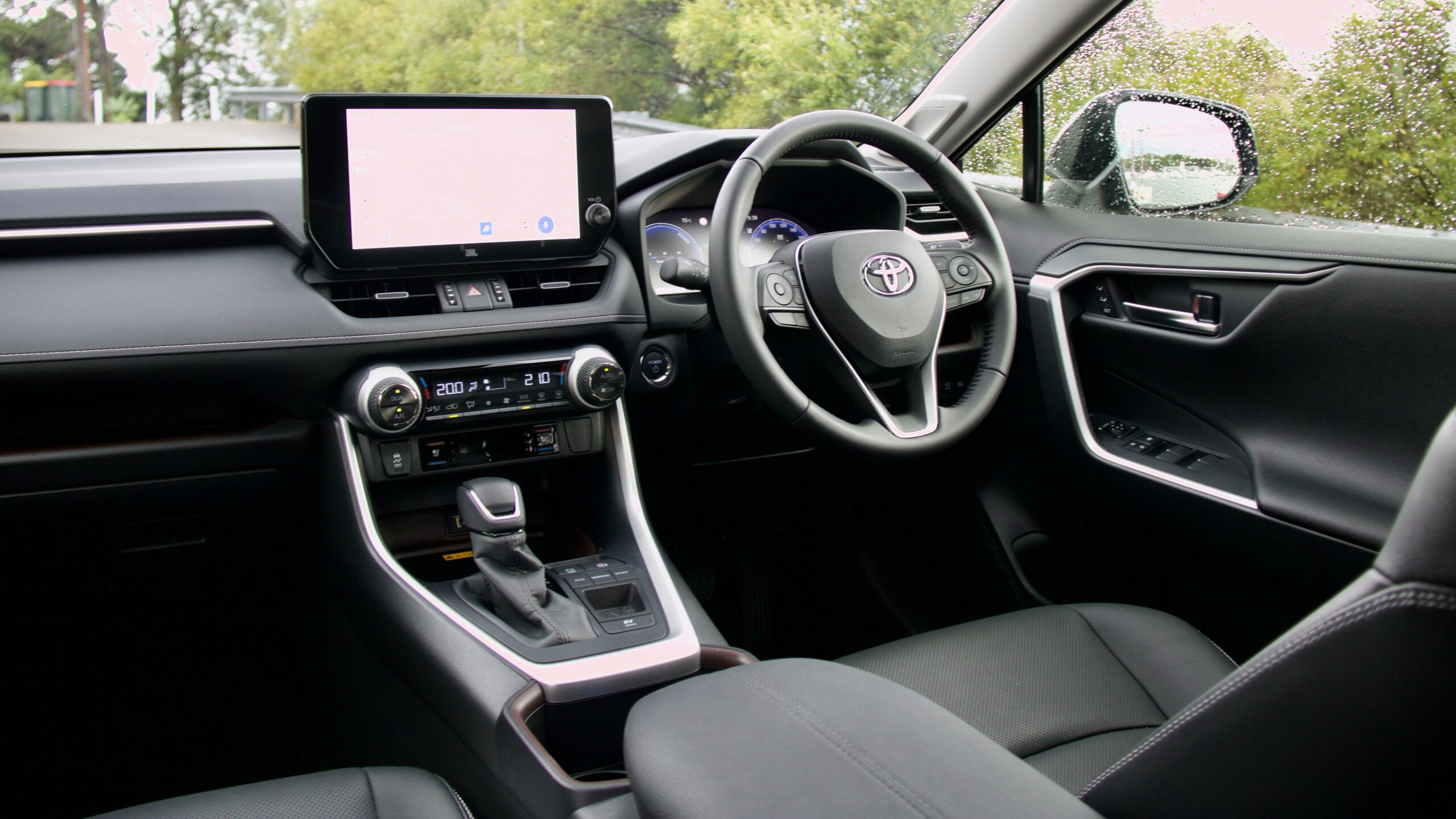
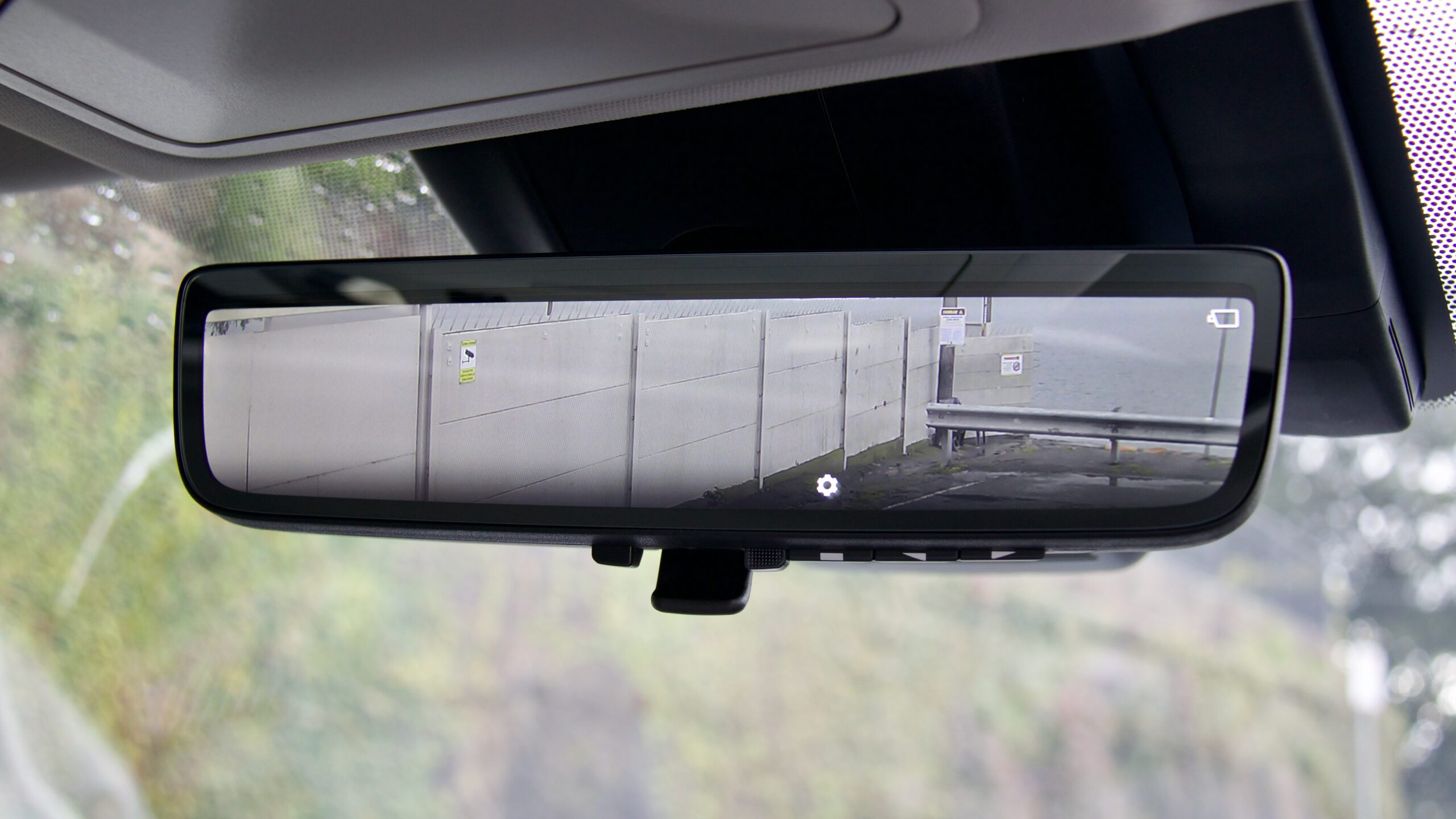
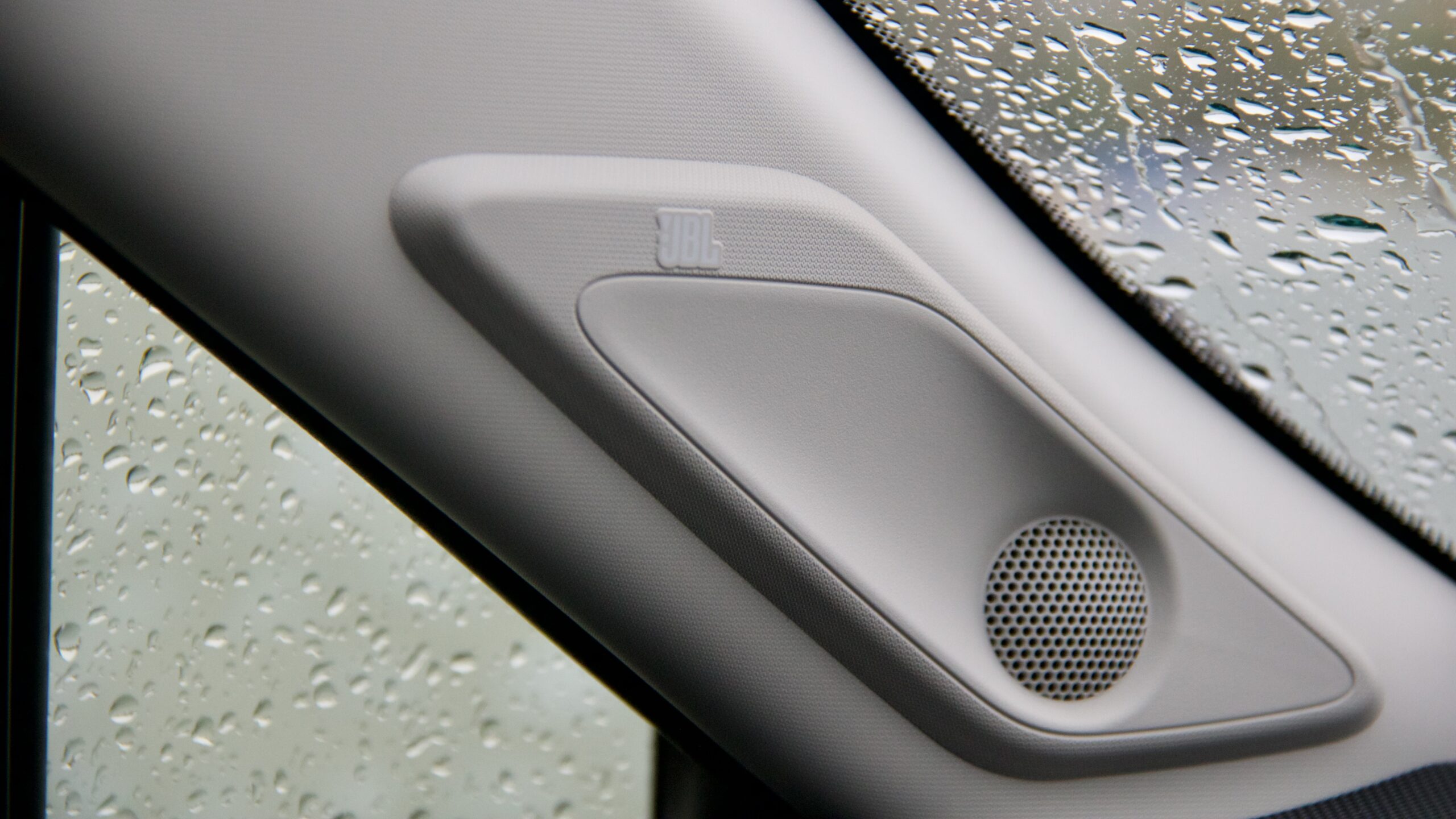
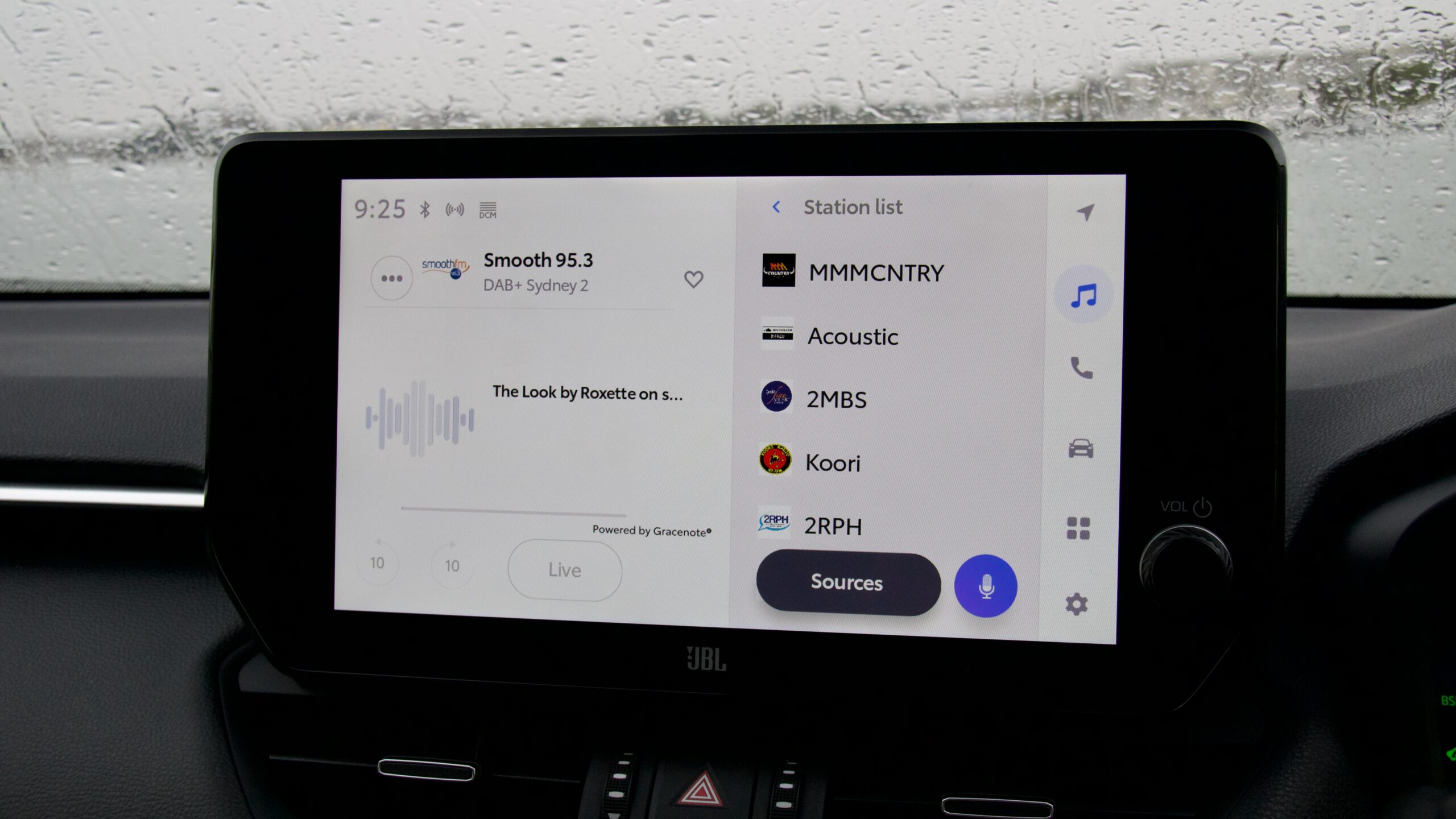
RAV4 Cruiser 2WD hybrid standard equipment:
- 18-inch gloss black alloy wheels
- Space saver spare
- Automatic dusk-sensing LED headlights
- LED front fog lights
- LED daytime running lights
- Auto-folding and heated side mirrors
- Powered boot lid
- Keyless entry and push button start
- Rain-sensing wipers
- Sunroof
- Leather upholstery
- Heated and ventilated front seats
- 10 ways of powered adjustment for the driver’s seat (including lumbar adjustment)
- Driver’s seat memory (two settings)
- Eight-way front passenger seat adjustment
- Ambient interior cabin lighting
- Auto-dimming digital rear-view mirror
- Dual-zone climate control
- 12.3-inch digital instrument cluster
- 10.5-inch touchscreen with live services
- Satellite navigation with live traffic
- AM/FM/DAB+ digital radio
- 9-speaker JBL sound system
- Wireless Apple CarPlay
- Wired Android Auto
- Wireless phone charger
- 5 USB charging points
- Remote connect through Toyota Connected Services
RAV4 Cruiser safety equipment:
The RAV4 received (a still current) five star ANCAP rating when tested in 2019 and is equipped with the following safety features:
- Seven airbags (dual front, driver’s knee, dual front side and curtain airbags for both rows)
- Autonomous emergency braking (AEB) with pedestrian, cyclist and intersection assist
- Lane trace assist
- Lane departure alert
- Road sign recognition
- Blind-spot monitoring
- Rear cross-traffic alert
- Adaptive cruise control
- Auto high beam
- 360-degree camera
- Front and rear parking sensors
- Toyota Connected Services including:
- SOS button
- Automatic crash notification
- Stolen vehicle tracking
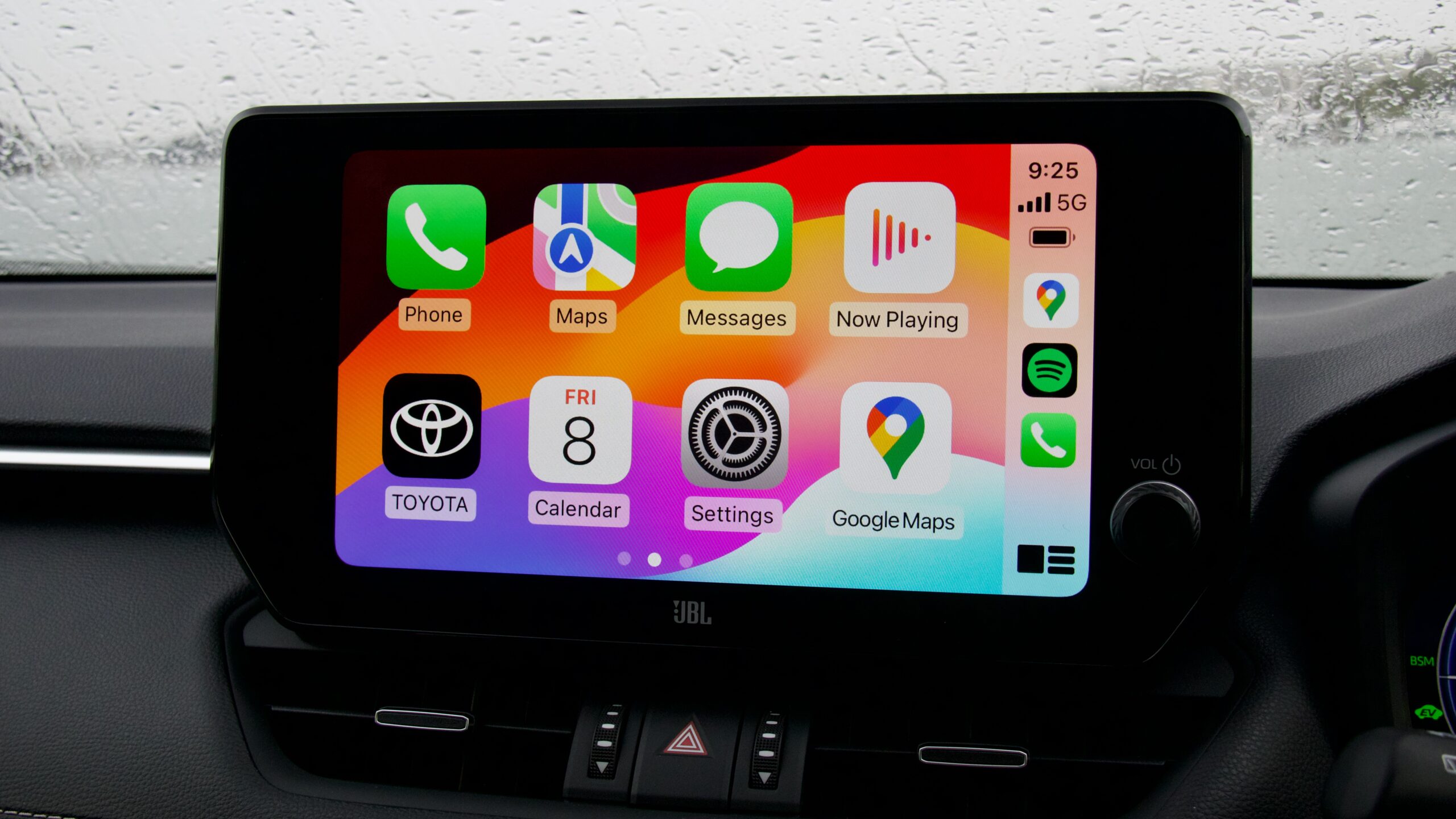
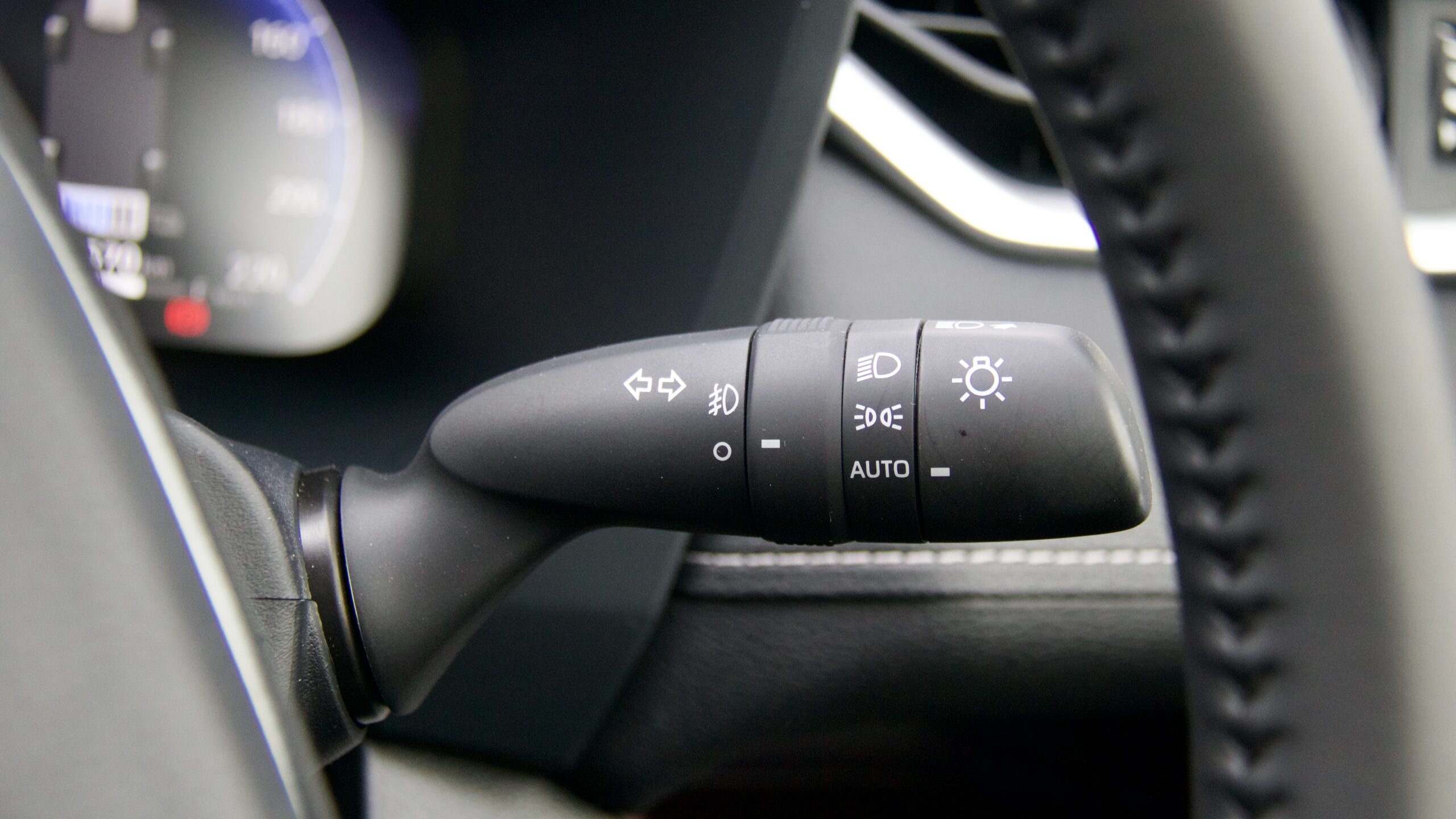
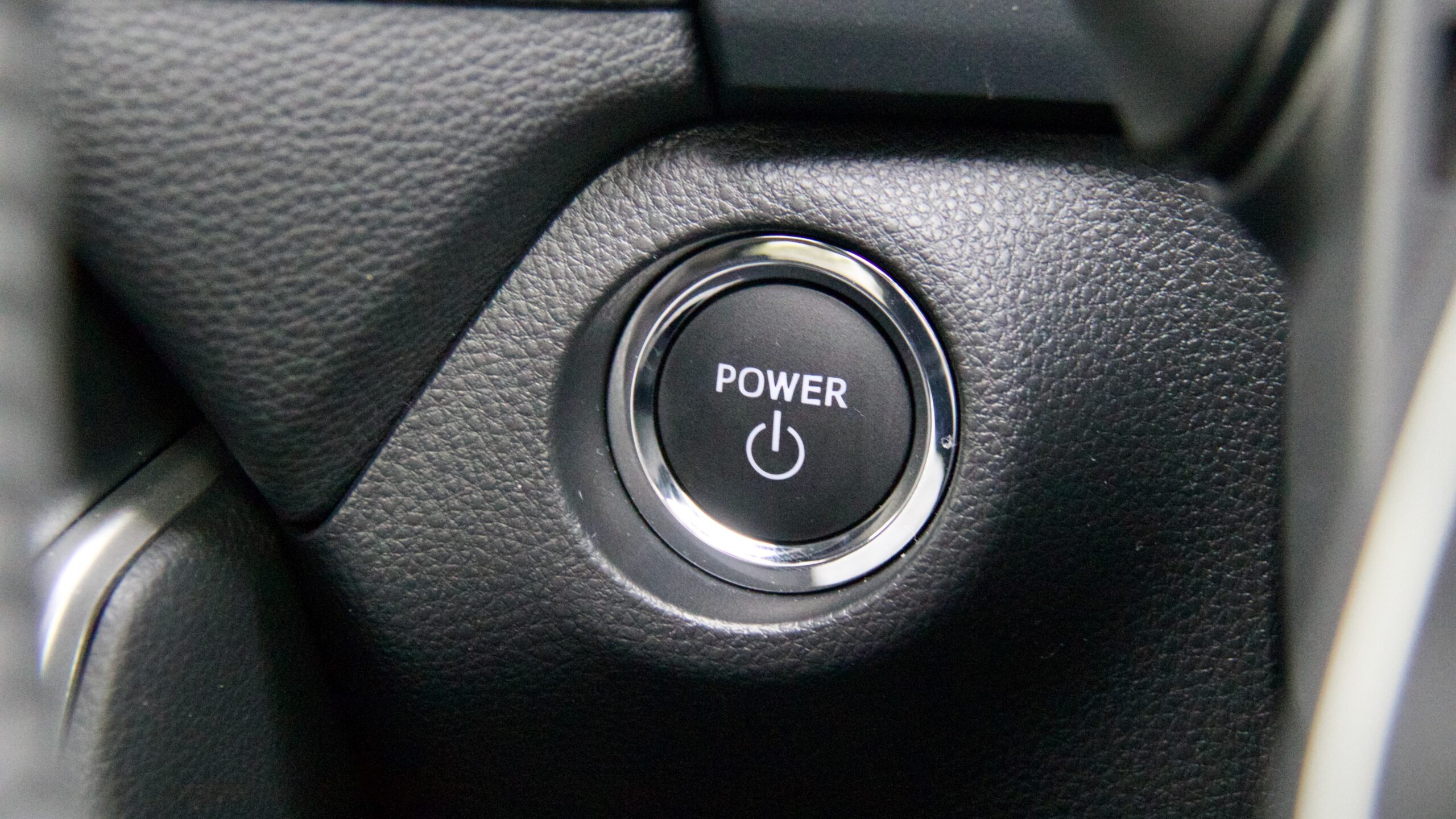
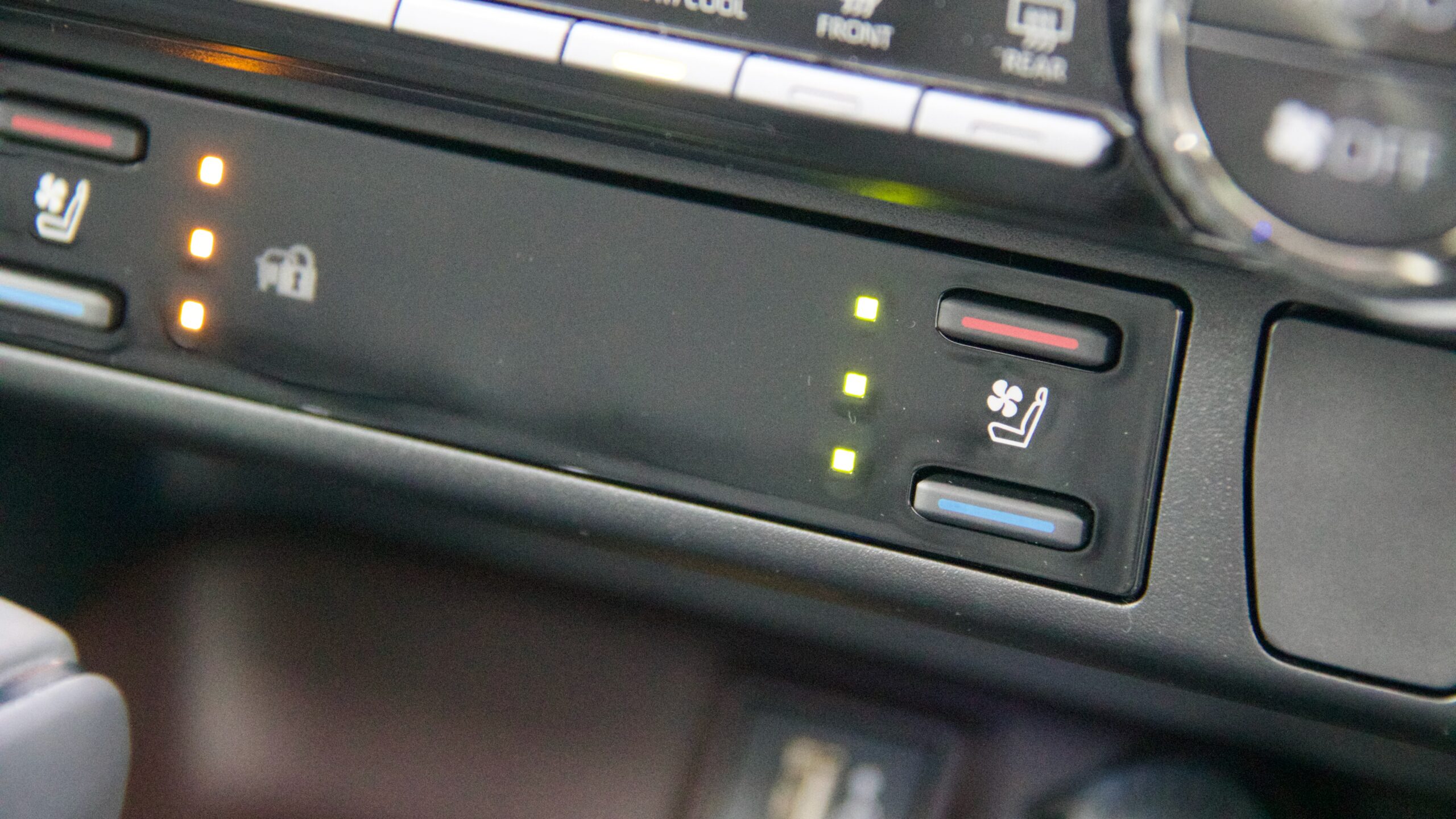
RAV4 Cruiser colour range:
Standard no cost colour:
- Glacier White
Premium colours ($705 extra)
- Silver Sky
- Frosted White
- Graphite
- Eclipse Black
- Atomic Rush
- Mineral Blue
- Saturn Blue (the colour of our test car)
Buyers have a choice of either a black coloured or nutmeg (beige) leather accented interior – both options are no cost.
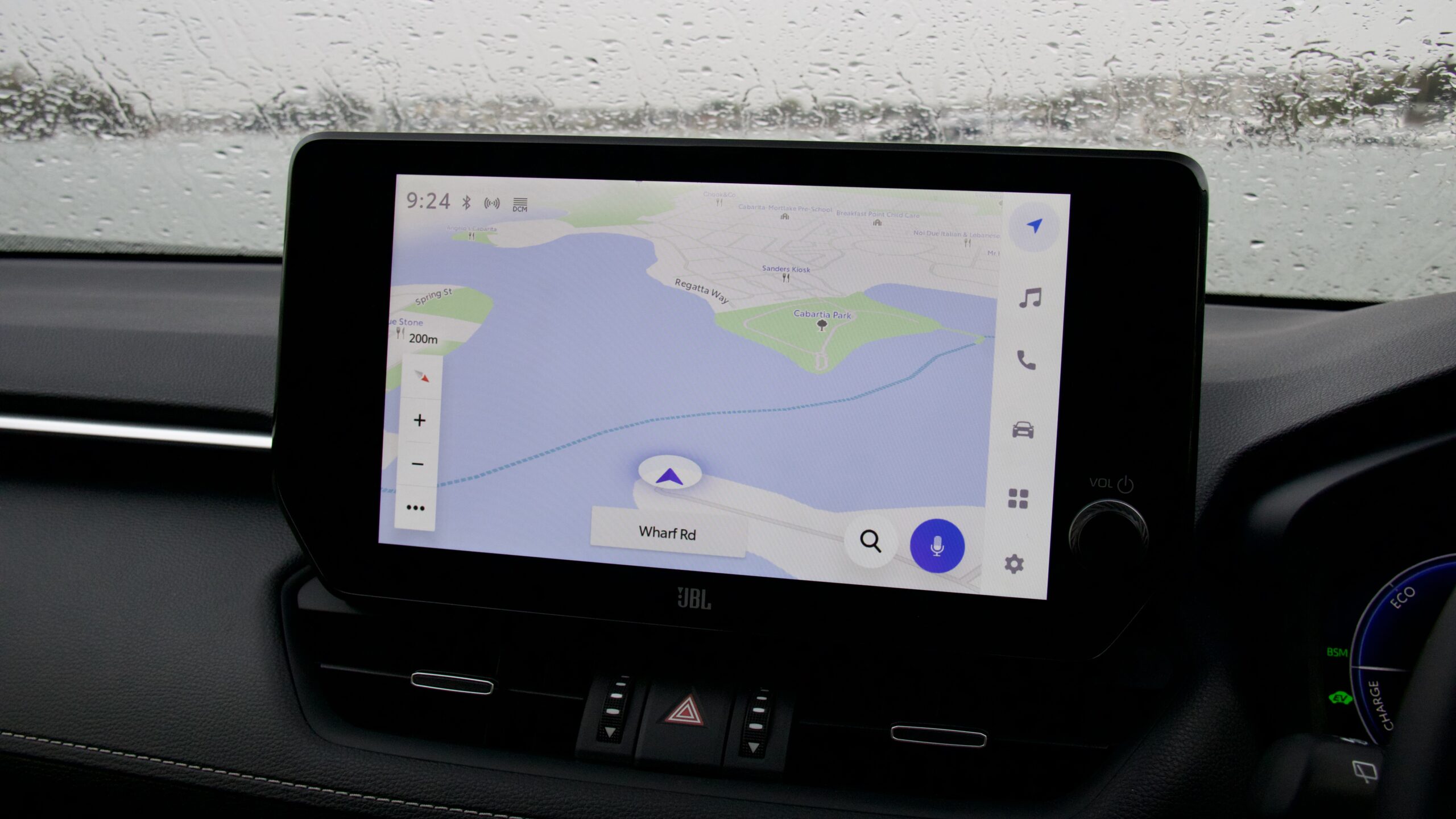
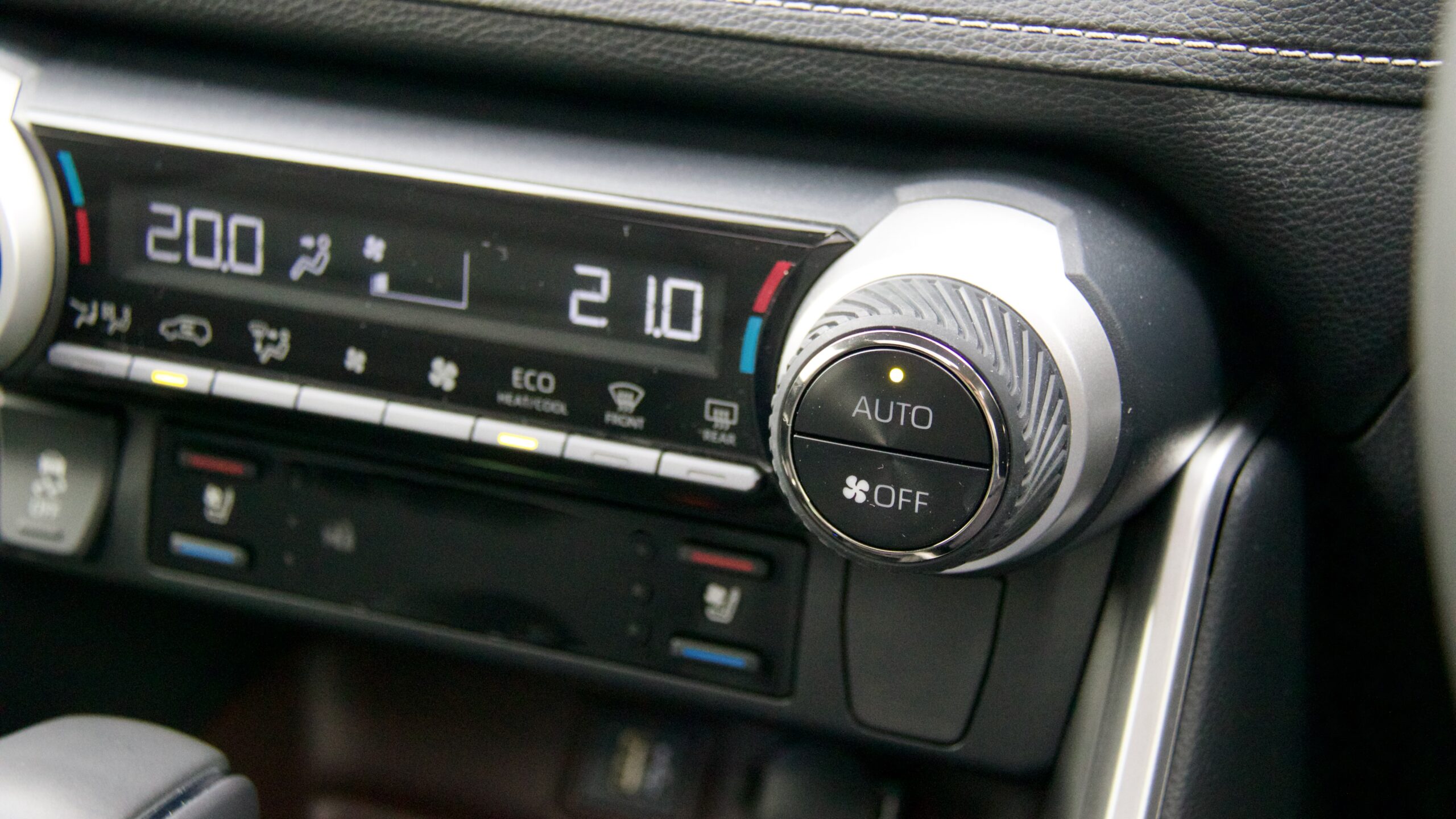
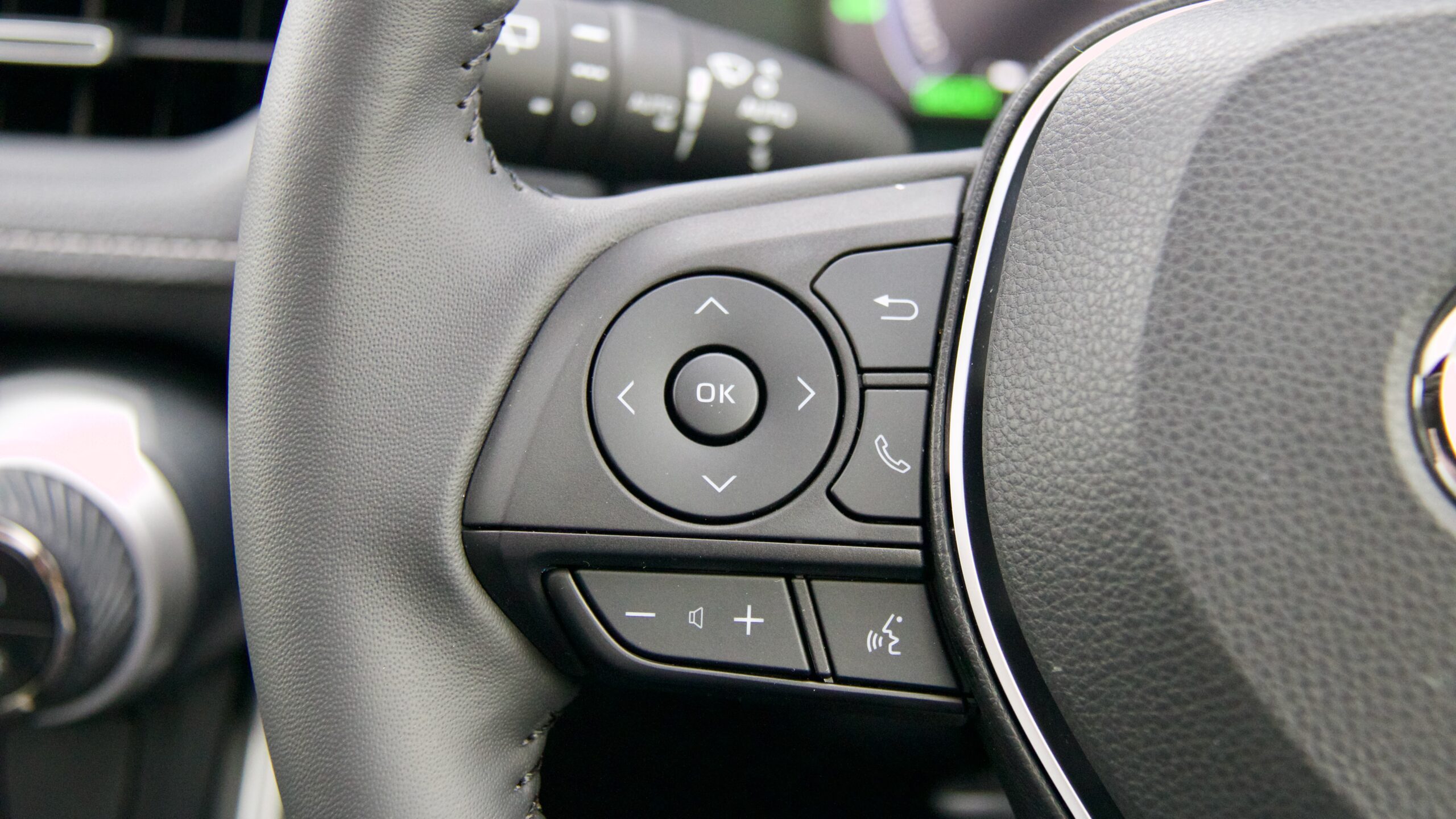
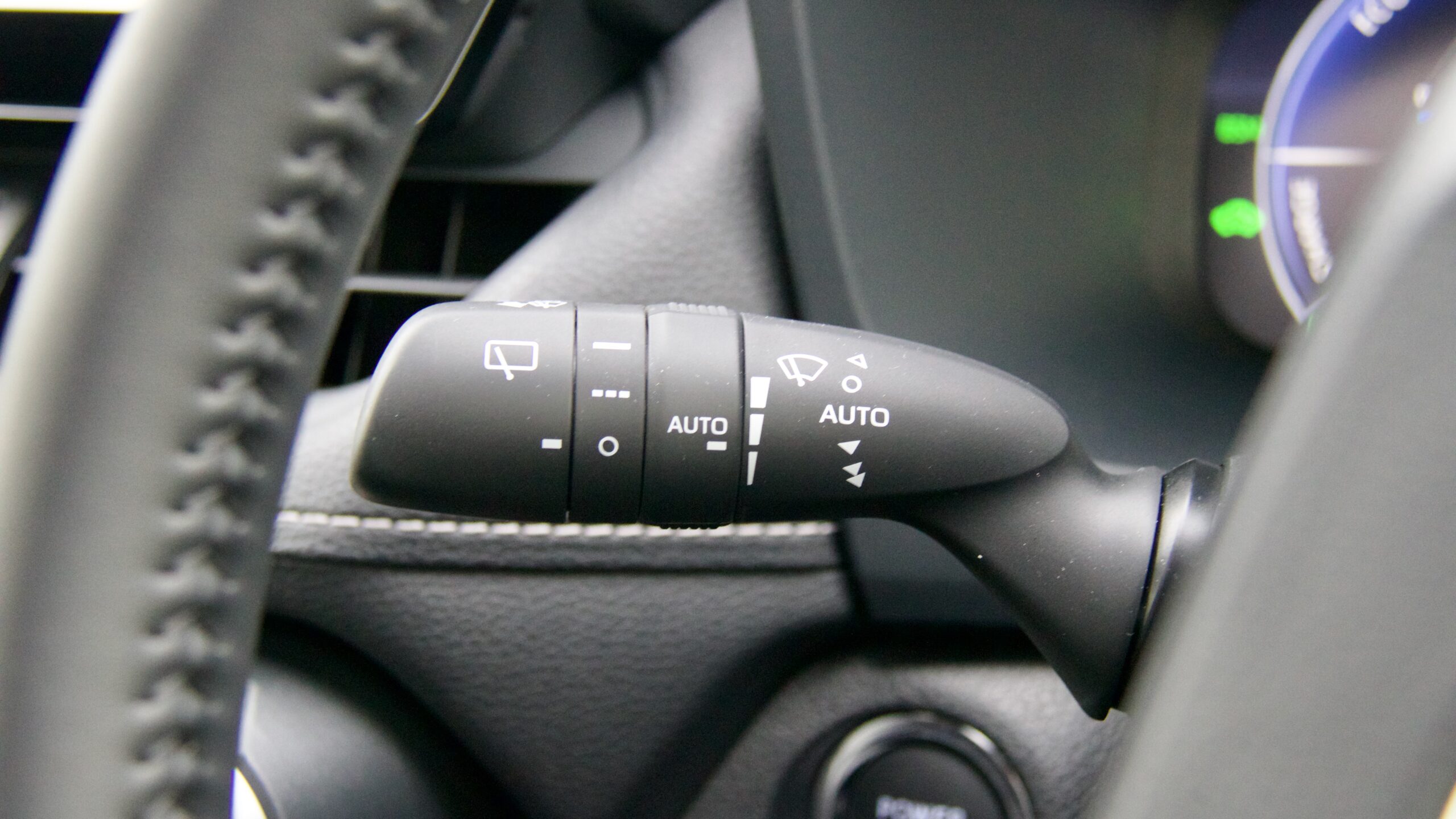
2023 Toyota RAV4 Cruiser 2WD hybrid competitors:
There is an ever expanding array of mid-sized SUV Hybrid competition for the RAV4 to content with, including the Haval H6 Ultra Hybrid, Honda CR-V e:HEV RS, the Nissan X-Trail Ti ePower and the Subaru Forester Hybrid S – out of this bunch, we think the Honda and the Nissan are the closest matches to the RAV4 Cruiser hybrid.
New to the market, the Honda CR-V e:HEV RS is the sole hybrid variant of the CR-V range and is priced at $59,900 drive away (Australia wide) and is fairly well equipped – it features some equipment missing from the RAV4 Cruiser, including active cornering lights, Matrix adaptive high beam, a panoramic sunroof, larger 19 inch alloy wheels (18 inch on the RAV4), three more speakers for the premium sound system for a total of 12, an additional four airbags, an auto-closing tailgate, front and rear auto braking, a rear fog light, automatic walkaway door locking, a burglar alarm and an extra two ways of adjustment for the driver’s seat. The RAV4, on the other hand, bests the CR-V with a space-saver spare wheel (the CR-V has no spare at all), ventilated front seats, an additional four ways of powered adjustment for the passenger seat, a digital rear-view mirror, a larger 12.3-inch digital instrument cluster, a larger 10.5-inch infotainment screen, intersection turn assist, a 360-degree camera and an extra USB charging port.
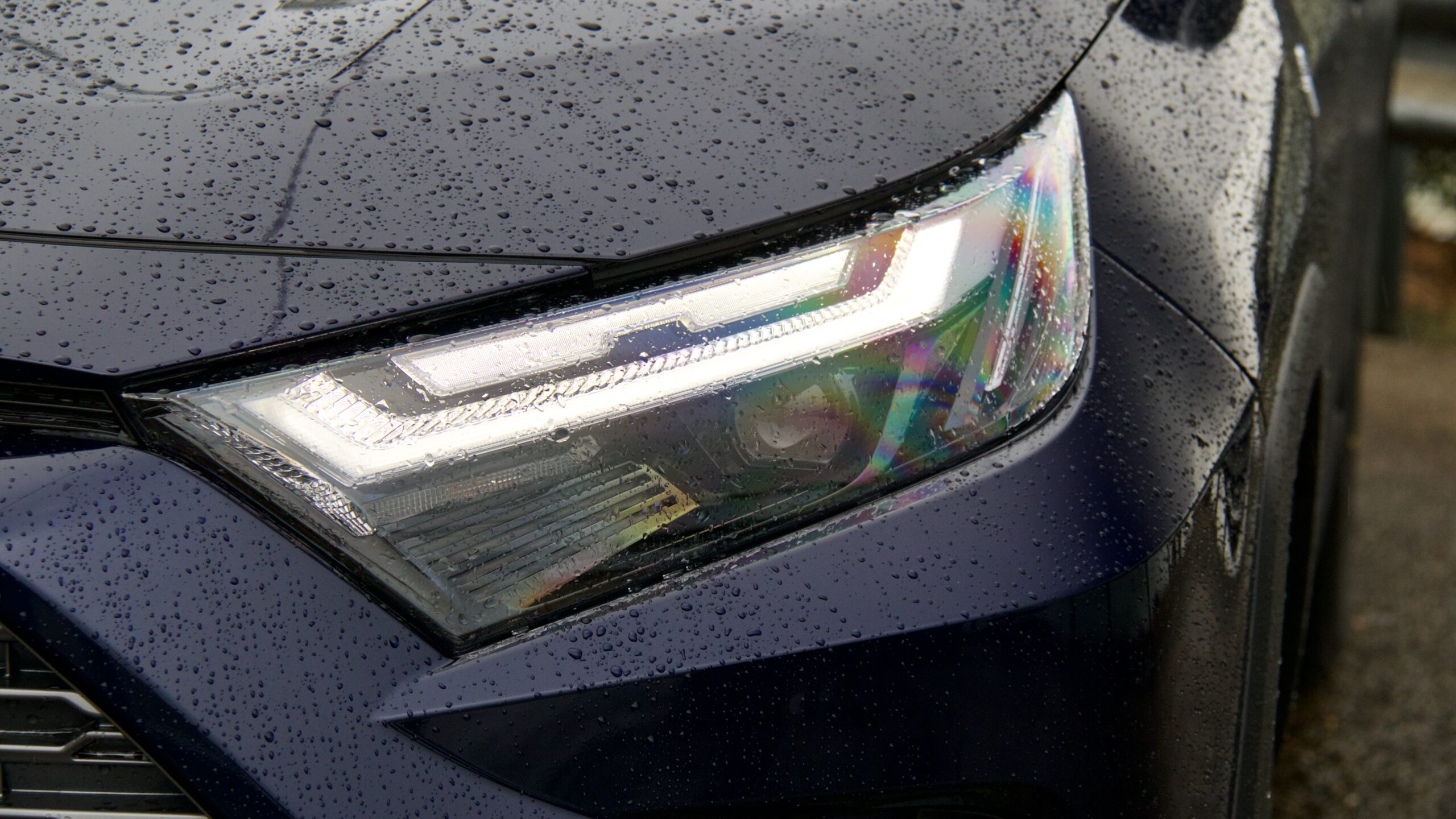
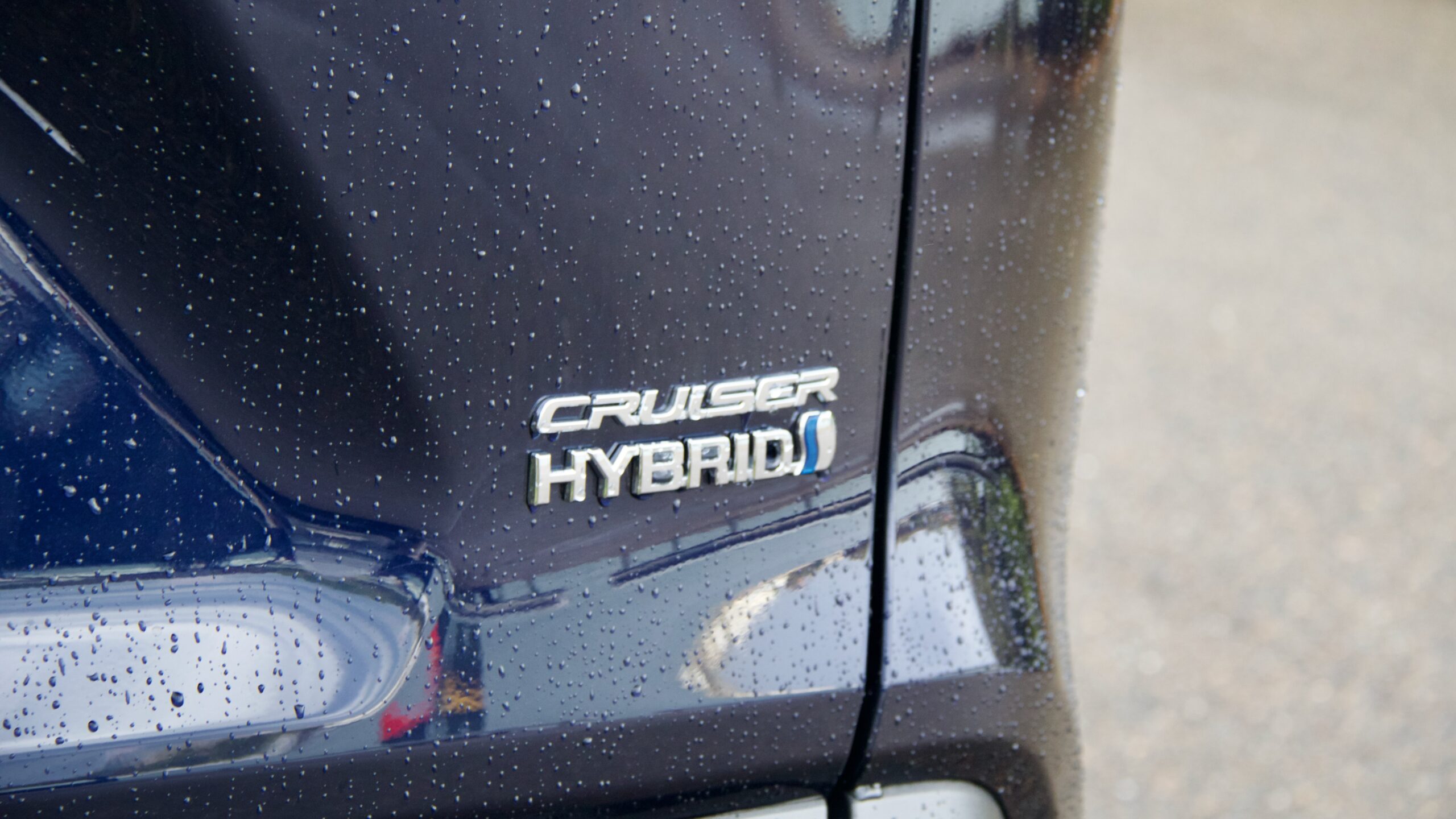
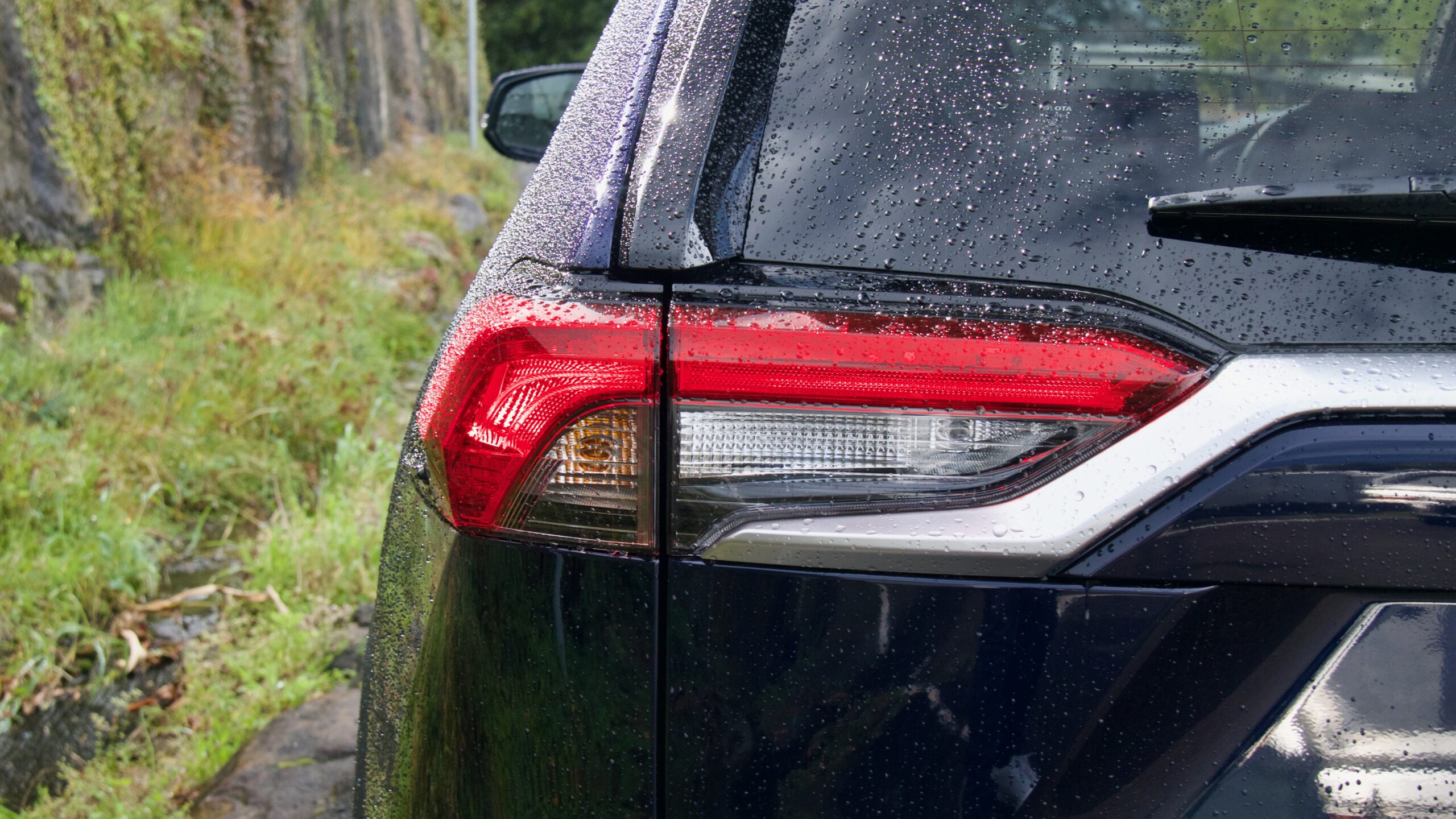
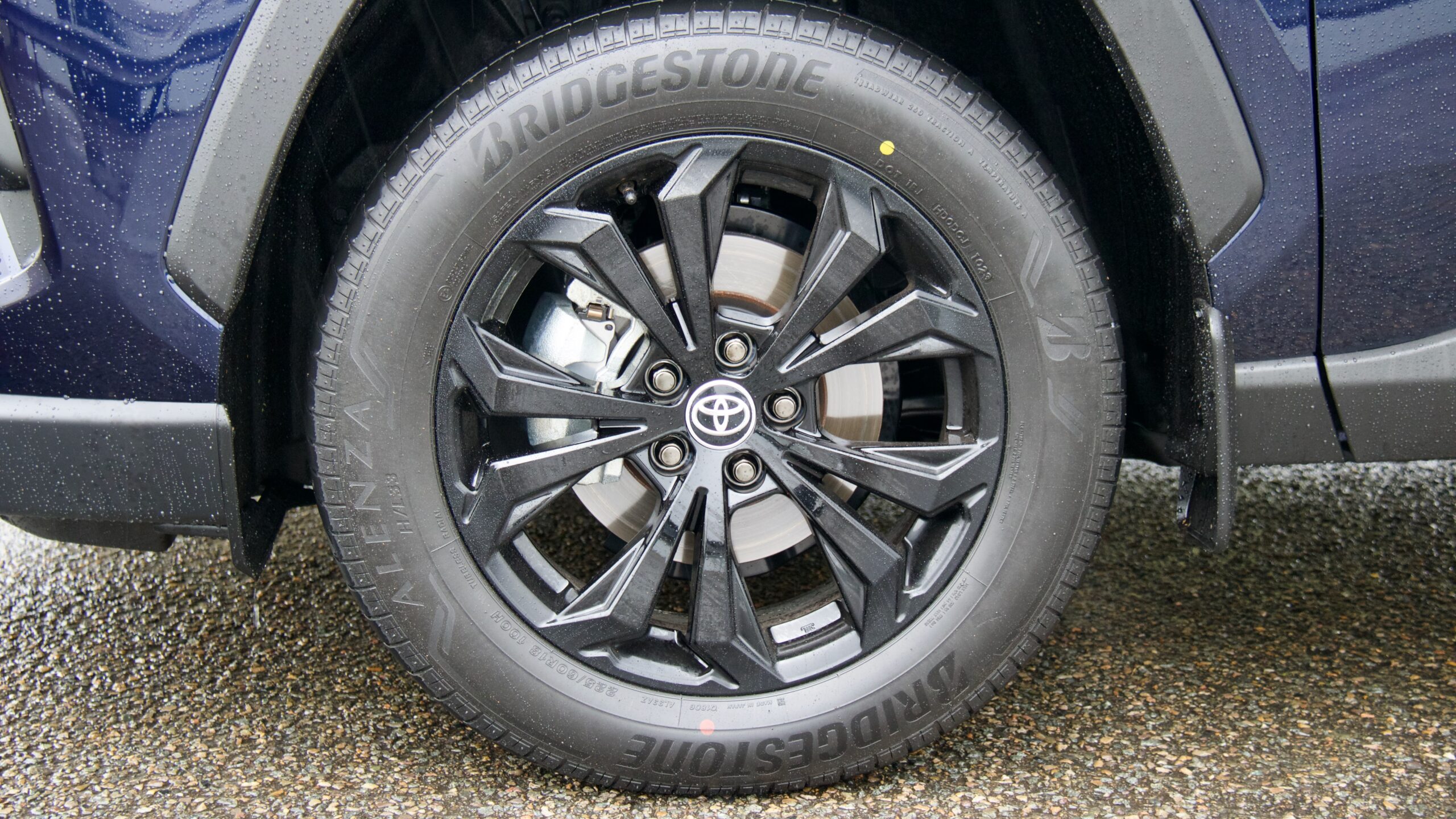
The Nissan X-Trail Ti ePower, another new for 2023, also competes closely with the RAV4 Cruiser is priced from around $59,200 drive-away (depending on location). Compared with the RAV4, it features larger 19 inch alloy wheels (versus 18 inch on the RAV4), 10 ways of powered adjustment for the driver’s seat (versus 8 ways in the X-Trail), a larger 12.3 inch infotainment system, adaptive headlights, a seperate zone of climate control for the second row, a heads up display, a centre airbag, a tyre pressure monitoring system, rear auto braking, blind spot assistance and a panoramic sunroof. The RAV4 on the other hand has a space saver spare (the X-Trail has no spare), driver and passenger ventilated seats, a premium nine-speaker sound system (versus a standard 6 speaker system in the X-Trail), an extra USB charging port, convenience and safety connected services through the Toyota connect system, memory for the driver’s seat and a driver’s knee airbag.
Despite gradual price creep since its 2019 introduction, against this competition, the RAV4 looks like fairly good value but there are still a few features that we’d like to see made standard. We find the omission of a head’s up display odd, given smaller Toyotas like the Camry, Corolla and Yaris have them. Adaptive headlights, the larger 12.3 inch infotainment system screen from the Kluger, rear auto braking and a panoramic sunroof would also improve the 2023 Toyota RAV4 Cruiser 2WD Hybrid’s value proposition significantly.
How efficient is the 2023 Toyota RAV4 Cruiser hybrid?
The 2023 RAV4 range is is offered with three drivetrain options- a naturally aspirated 2.0 litre petrol engine mated to a CVT, a 2.5 litre petrol engine mated to an 8 speed automatic transmission (only offered on the range topping Edge variant) and the 2.5 litre hybrid engine mated to an eCVT as tested here. Most people will know by now that Toyota’s hybrid setup pairs a petrol engine – in this case a 2.5-litre unit, to (in 2WD variants) a single electric motor, which is powered by a 6.5Ah nickel metal hydrate battery. The RAV4 can run on solely on electric power at lower speeds, or on a combination of petrol and electric power. We would like to see Toyota move to a more modern lithium battery for weight and fuel economy benefits, but the NiMh battery still does the job.
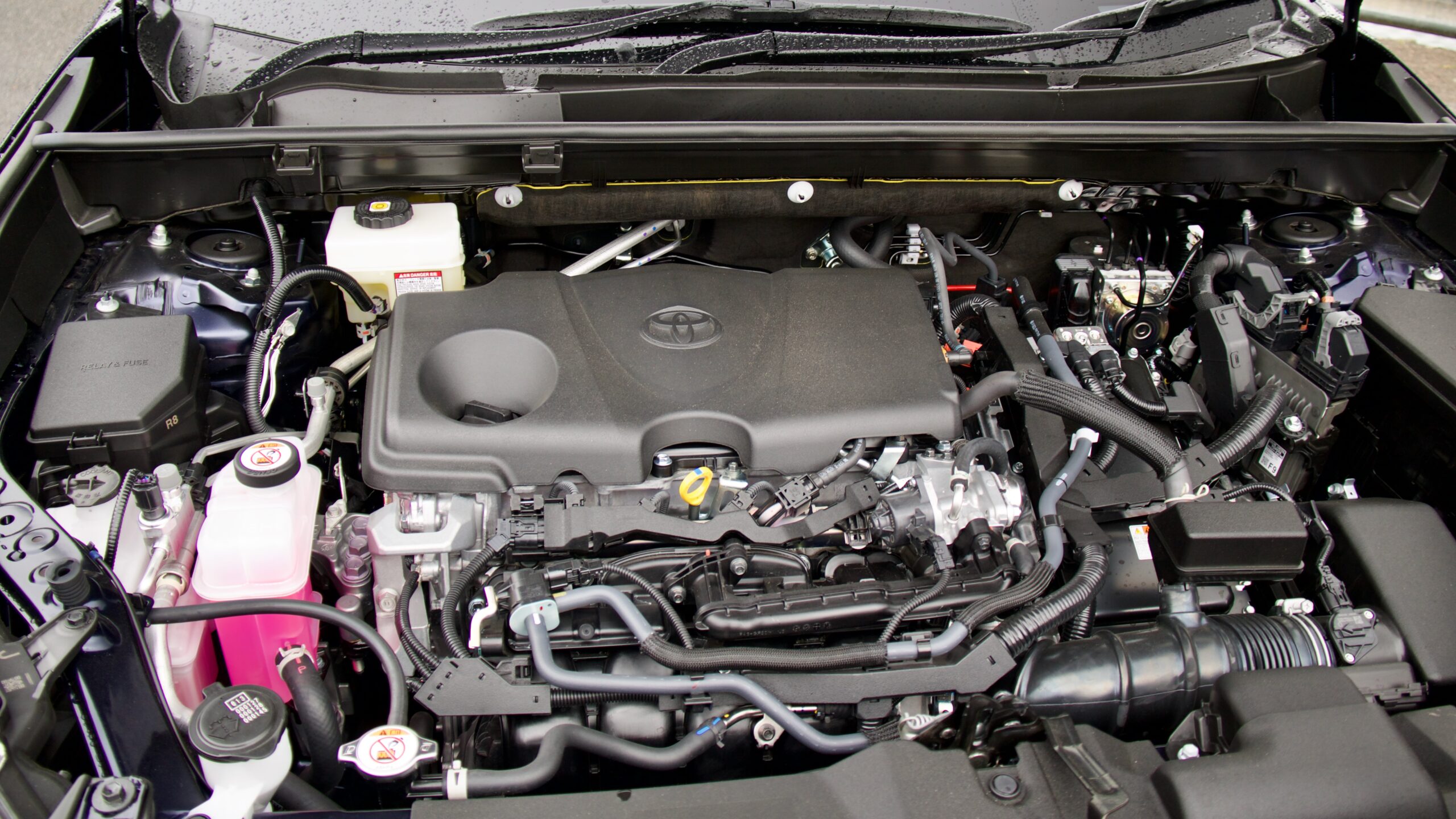
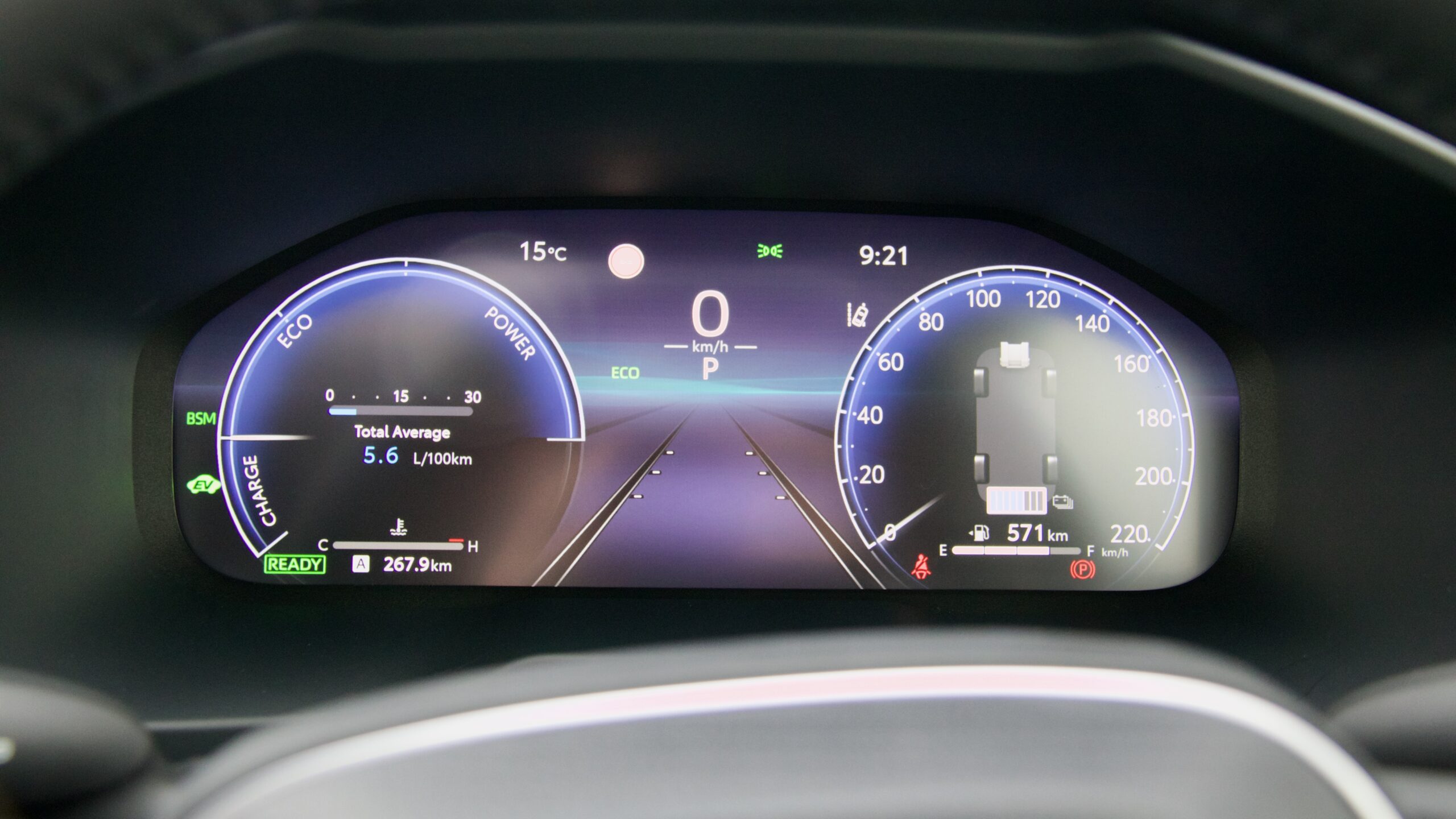
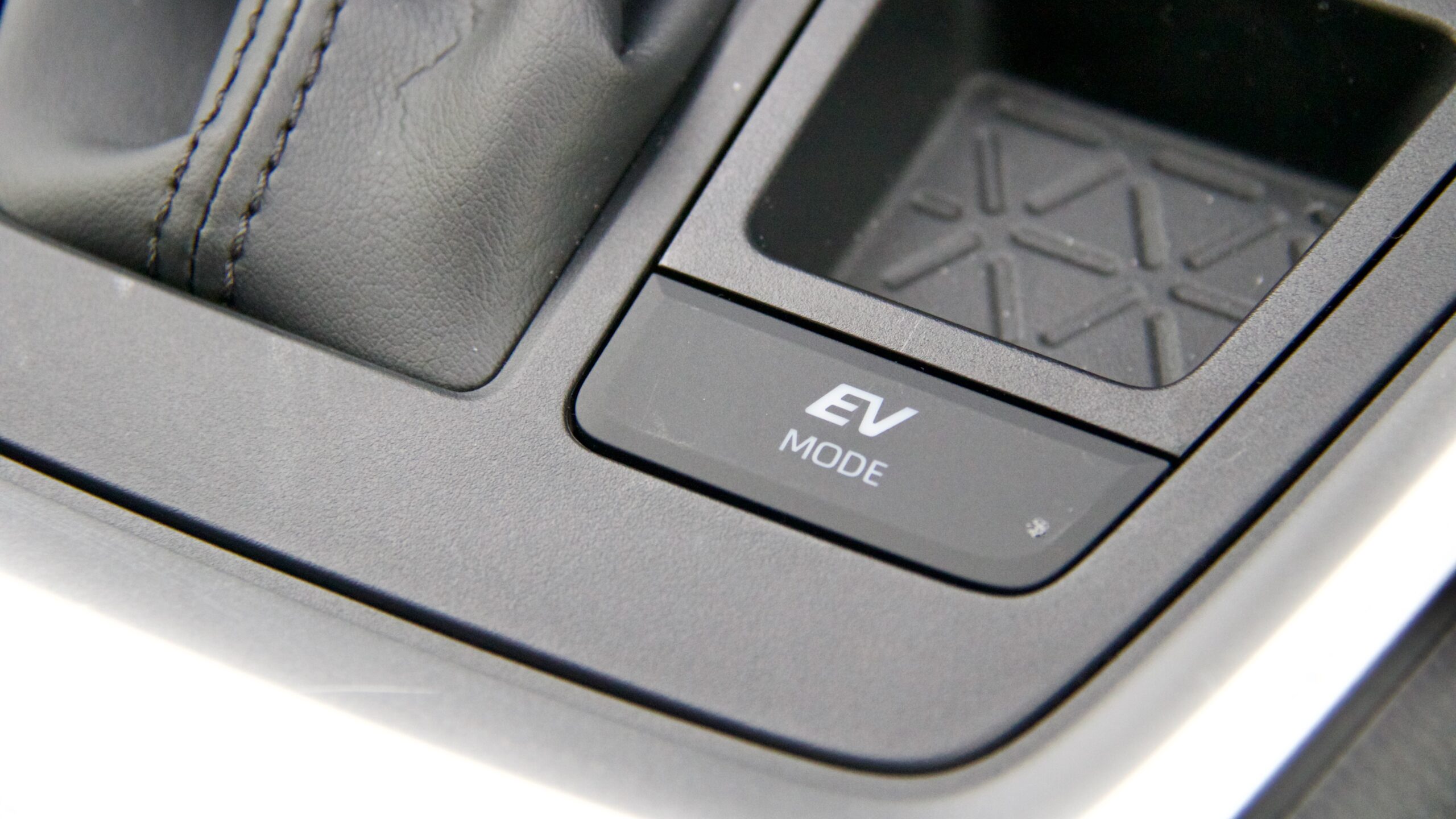
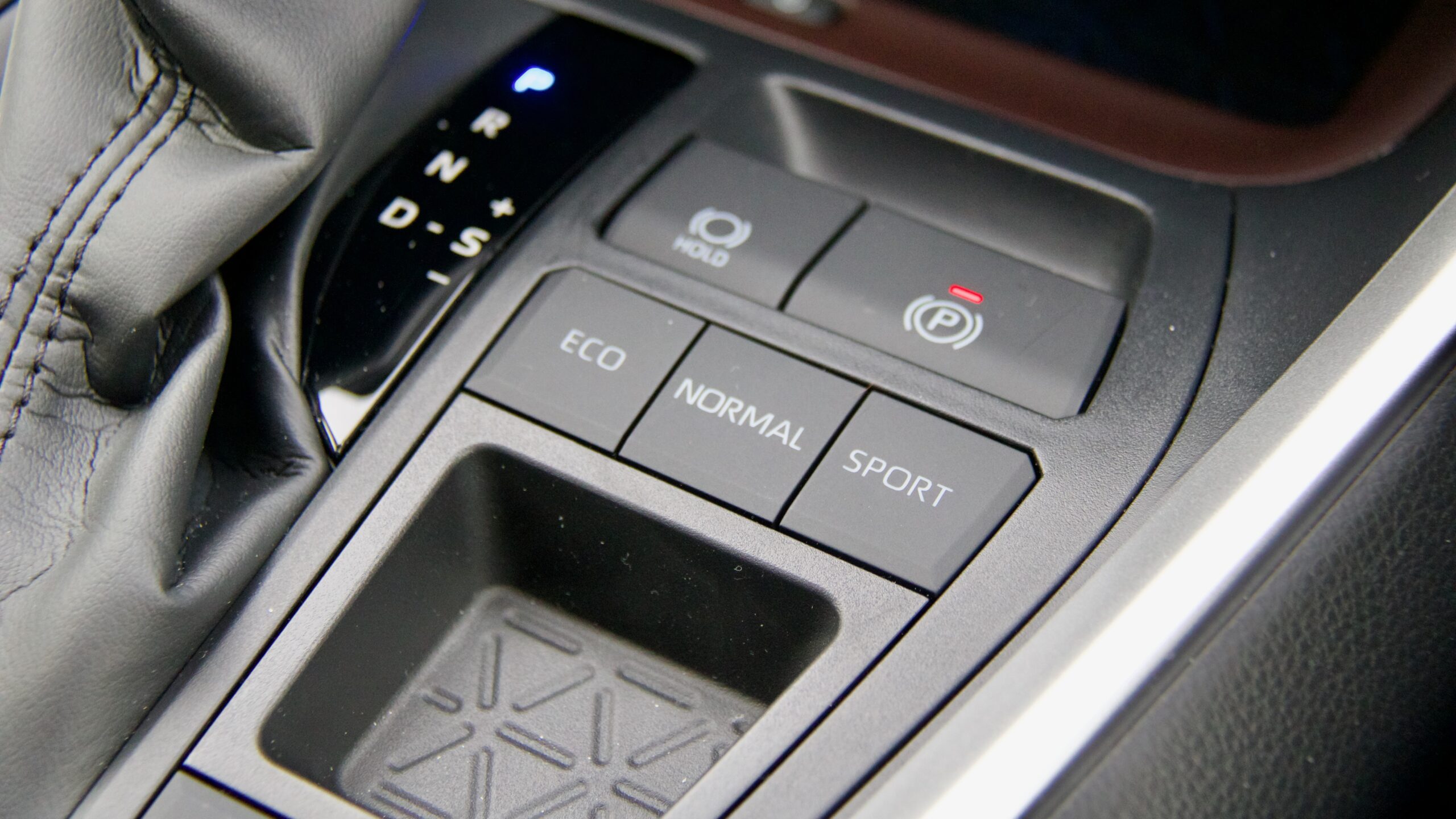
The internal combustion engine develops 131kW of power and 221Nm of torque between 3600rpm and 5200rpm. The electric motor develops 88kW of power and 202Nm of torque, and the combined system output of both power sources is a healthy 160kW. Toyota doesn’t quote a combined torque figure. Toyota’s ‘eCVT’ transmission handles combining and then sending power from the two sources to the front wheels. The powertrain has plenty of up and go for around town thanks to the instant torque provided by the electric motor and the RAV4 is also quite comfortable on the highway with more than enough power for overtaking. The eCVT does an admirable job handling the petrol engine switching on and off, with minimal vibrations or harshness felt through the steering wheel or pedals. The petrol engine itself is fairly refined – perhaps it’s the contrast between the engine being on and the near silence of purely on battery power that makes the engine seem louder than it is.
Fuel economy, in typical Toyota hybrid style, is excellent. Toyota quotes a fuel usage figure of 4.7L/100km and after a week of mixed highway, suburban and start stop traffic, we returned a figure of 5.1 litres per 100kms, which is impressively close to Toyota’s figure and half the fuel usage of what most similarly sized non-hybrid SUVs achieve. Amongst hybrid competition, neither the Honda CR-V e:HEV or Nissan xTrail ePower drivetrains can quite match the RAV4 for claimed efficiency. The trade off is that while not quite as bad as ‘traditional’ non-stepped CVTs, Toyota’s eCVT will drone when you punch the accelerator which does detract from the experience a bit.
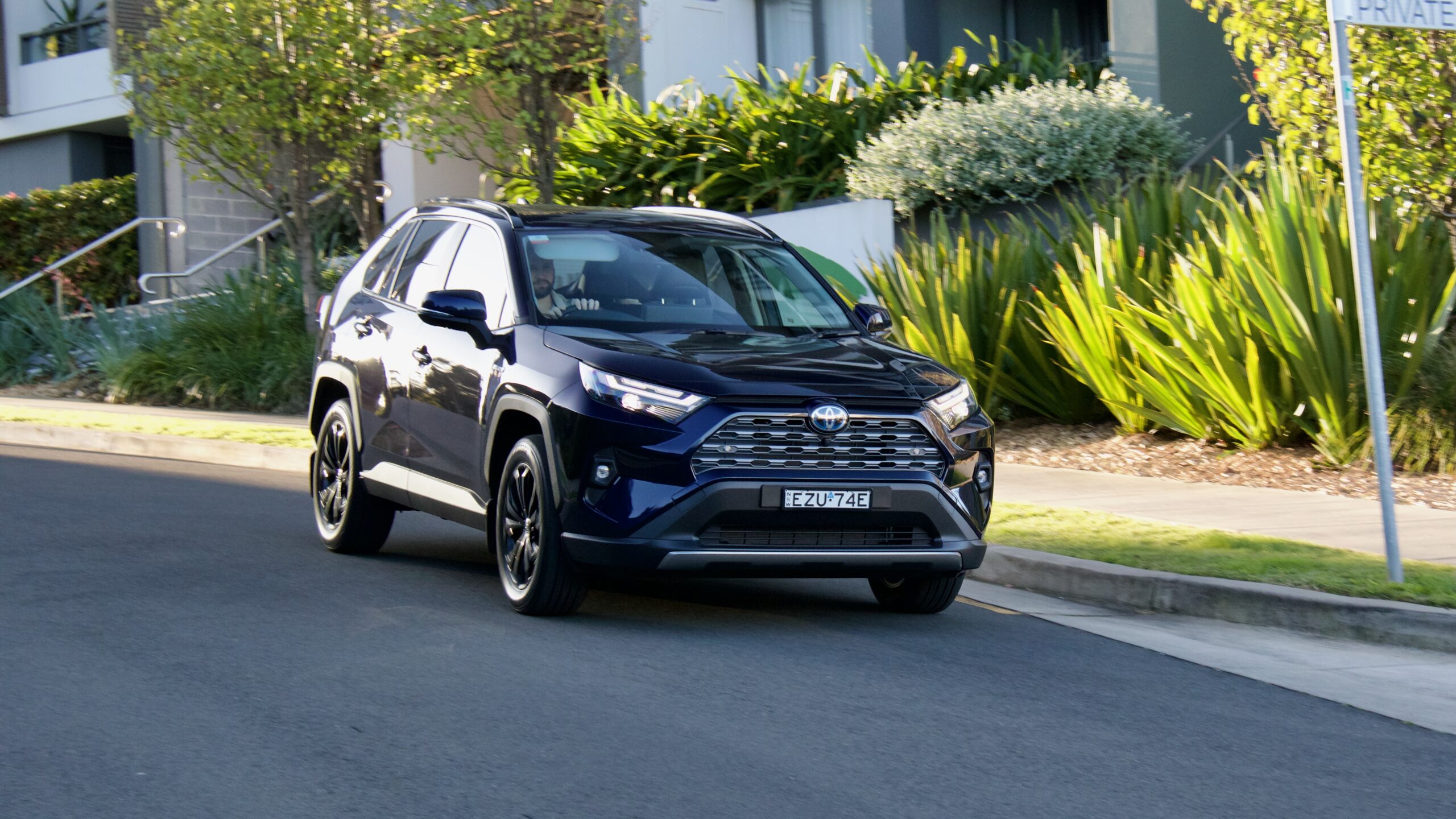
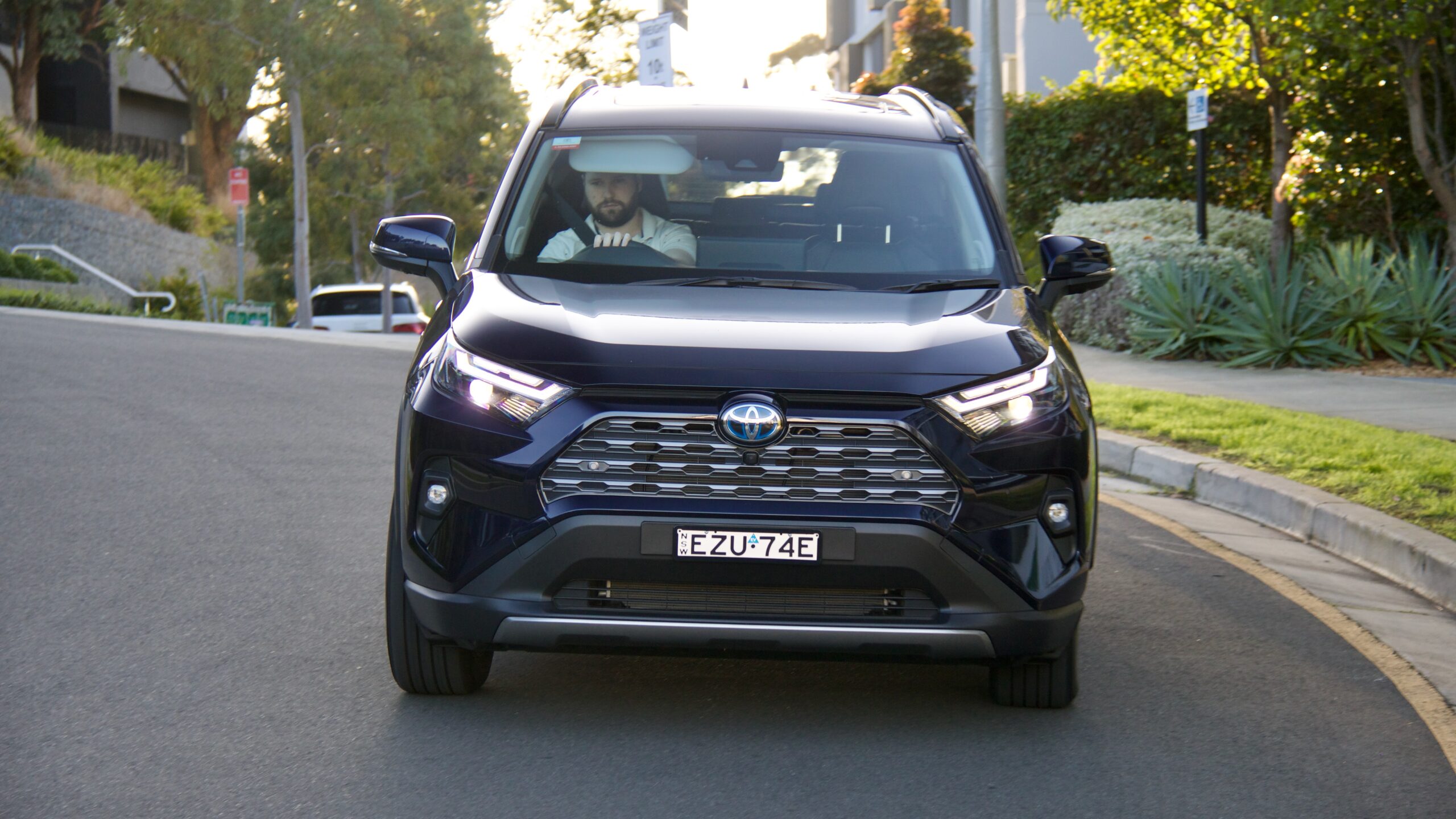
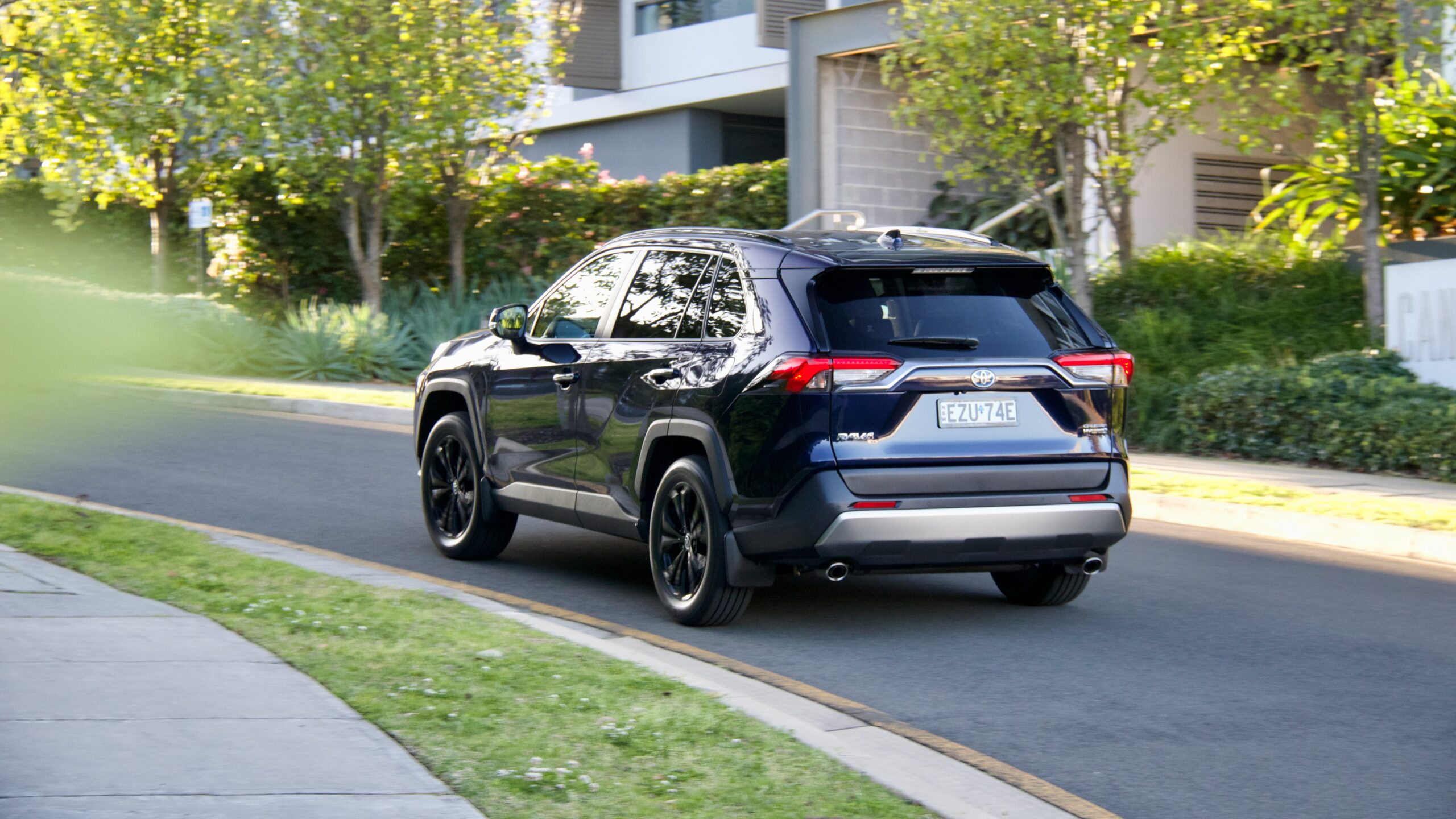
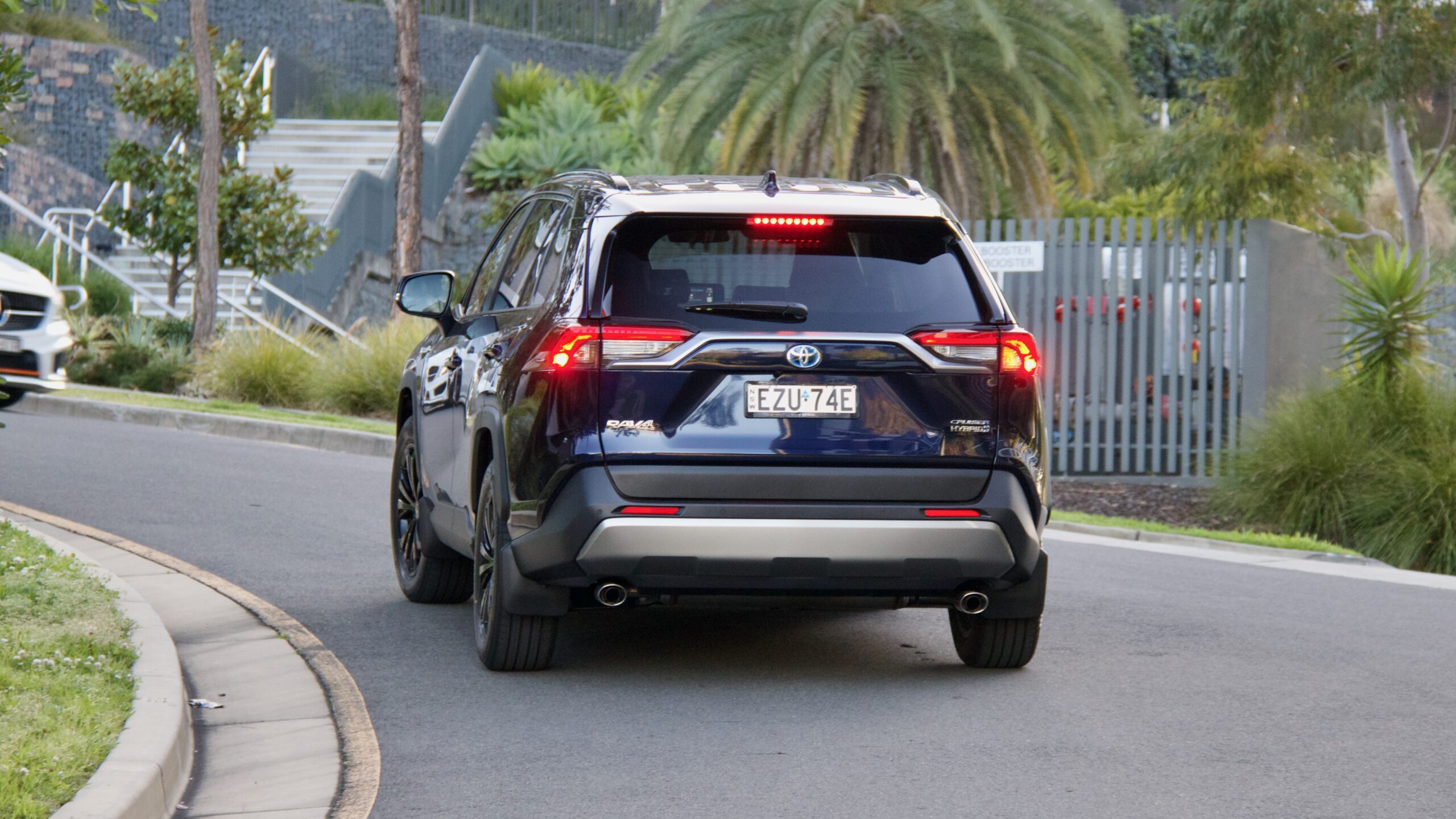
As with all Toyota hybrids, the digital instrument cluster features a handy hybrid efficiency metre, which gives feedback on acceleration, crushing and braking allowing drivers to gauge their driving and adjust to achieve the best possible efficiency. The RAV4 will happily run on 91 octane fuel and with a full 55-litre tank of fuel, and achieving the economy figures we did, a driving range of over 1,000km should be achievable.
How does the 2023 Toyota RAV4 Cruiser hybrid drive?
Dynamically, the 2023 Toyota RAV4 Cruiser 2WD hybrid leans more towards comfort than outright handling ability, but that’s not to say it’s a dynamic disaster at all – it strikes a mature balance between comfort and handling. The ride is fairly soft, which makes it comfortable which we think the target market will enjoy. Its steering is surprisingly balanced very well – not too heavy but not too light, which makes manoeuvring into tight spaces and cramped cities easier than you’d think, however it’s heavy enough to feel precise.
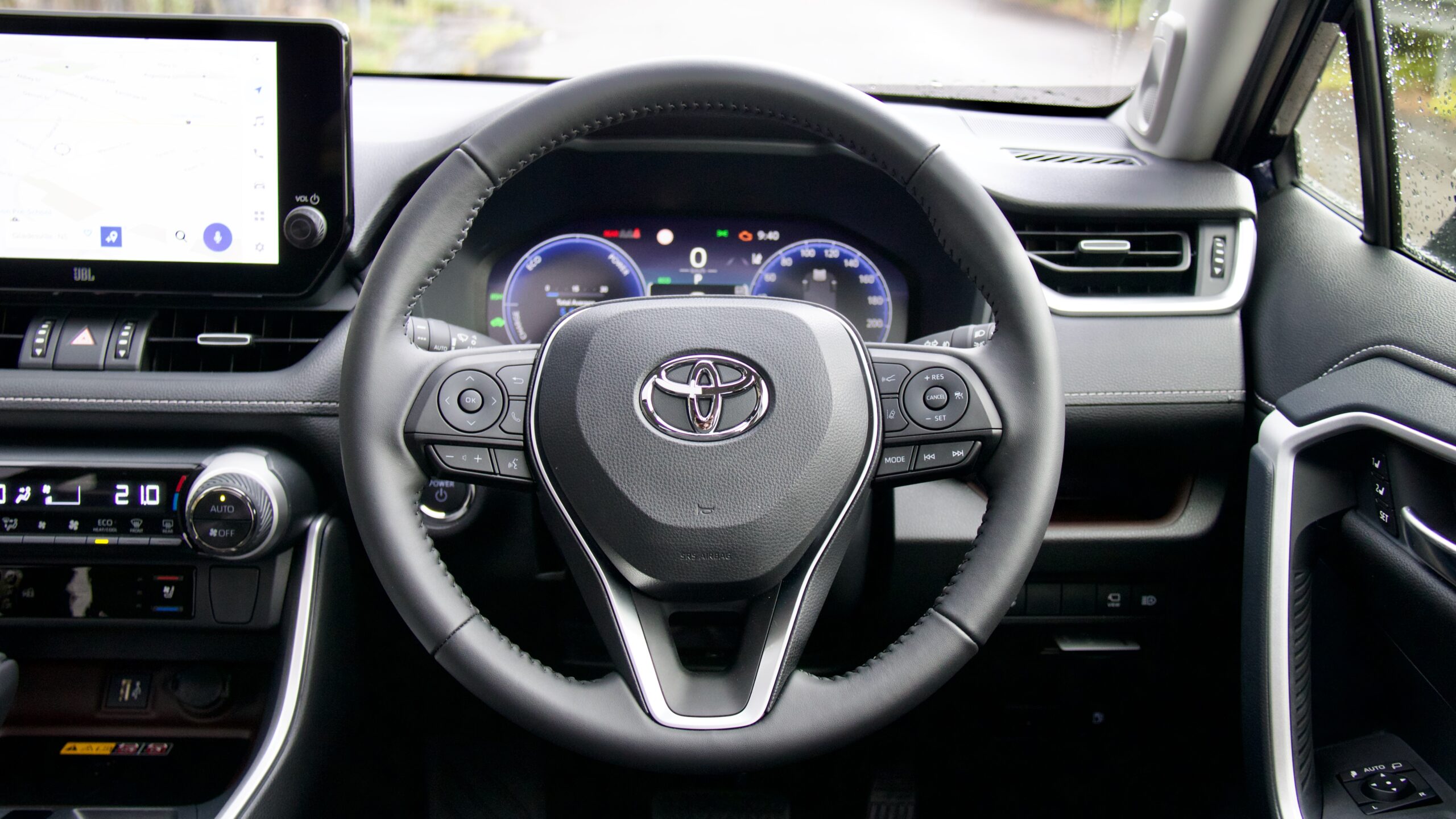
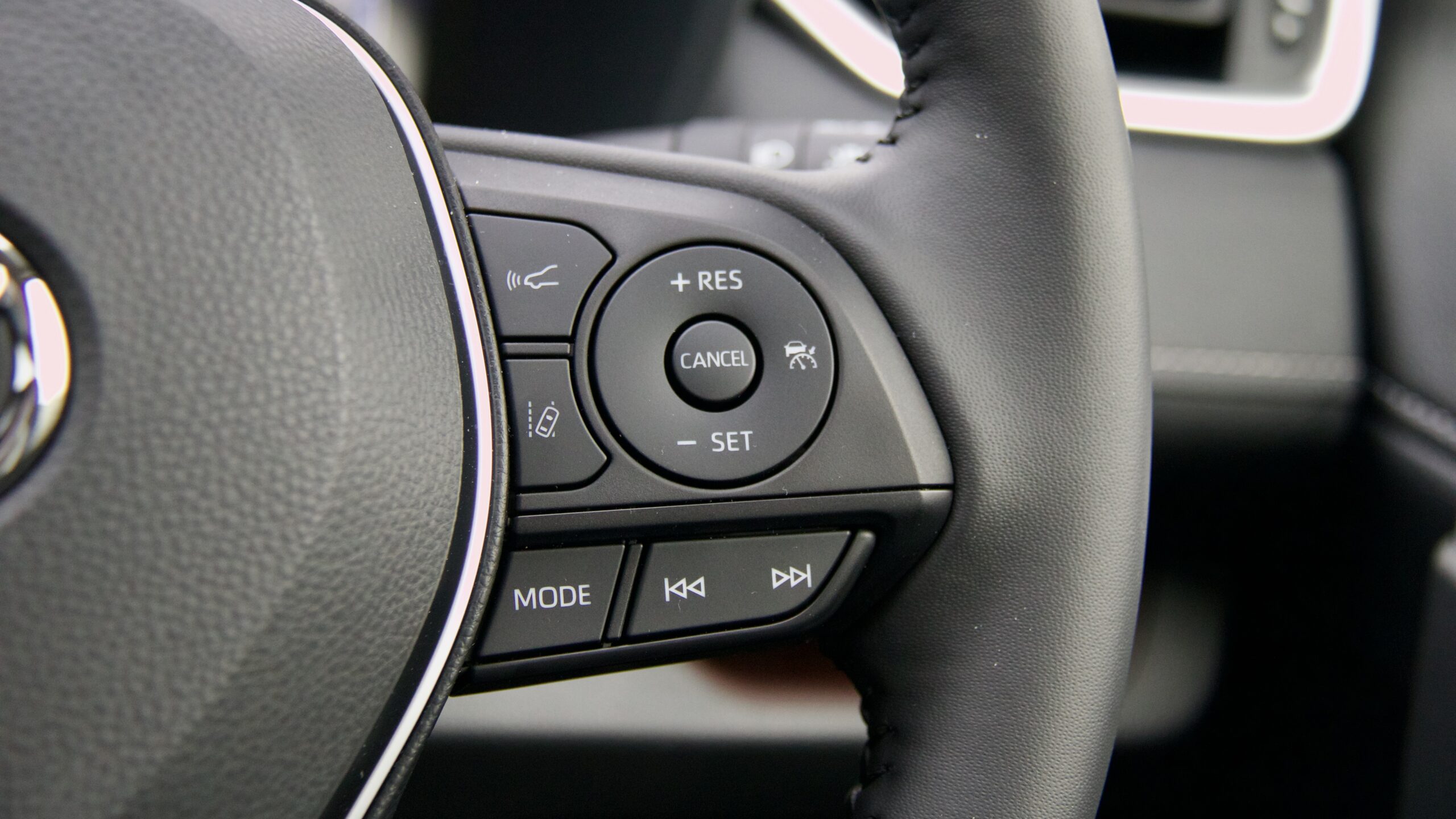
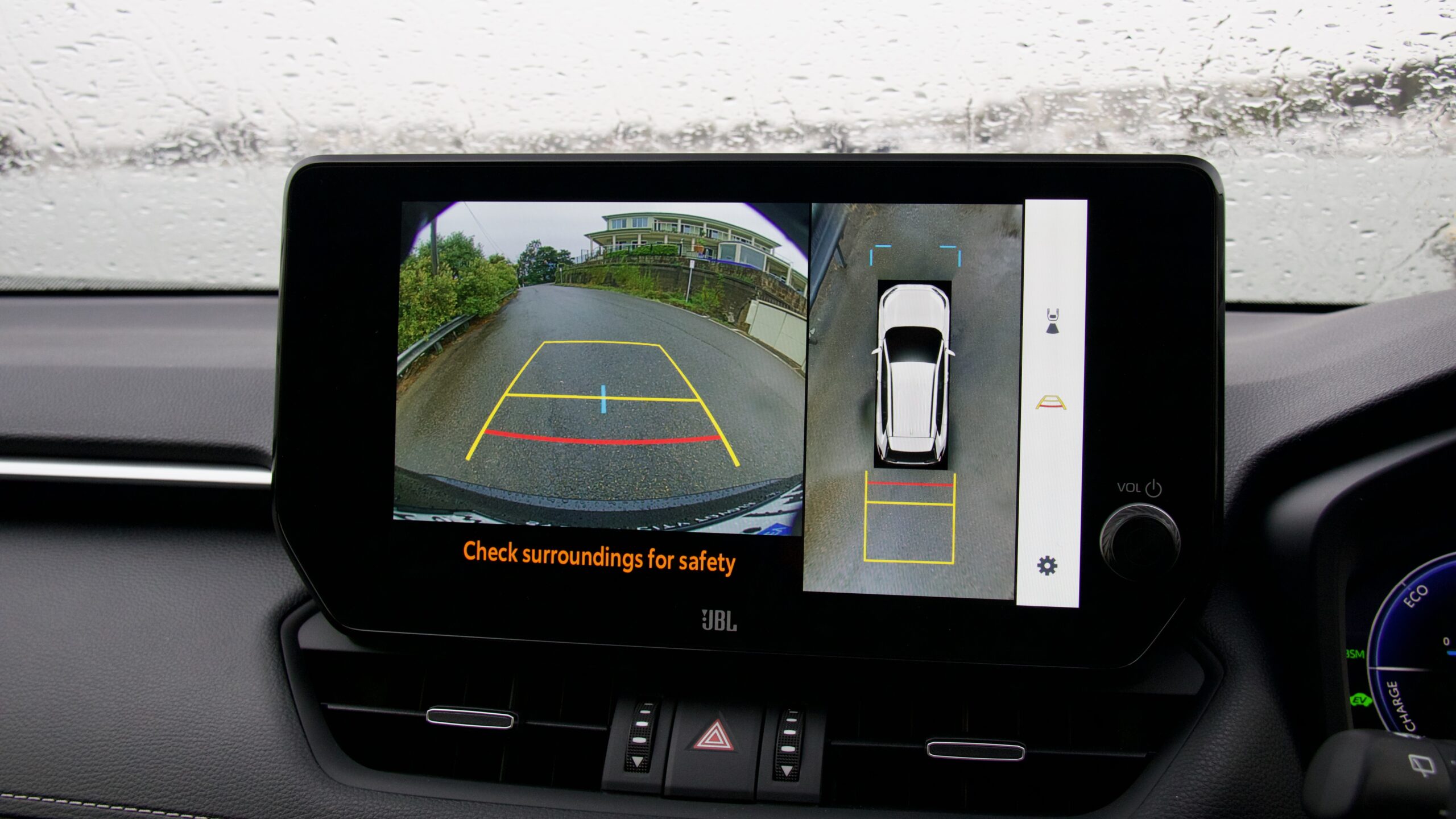
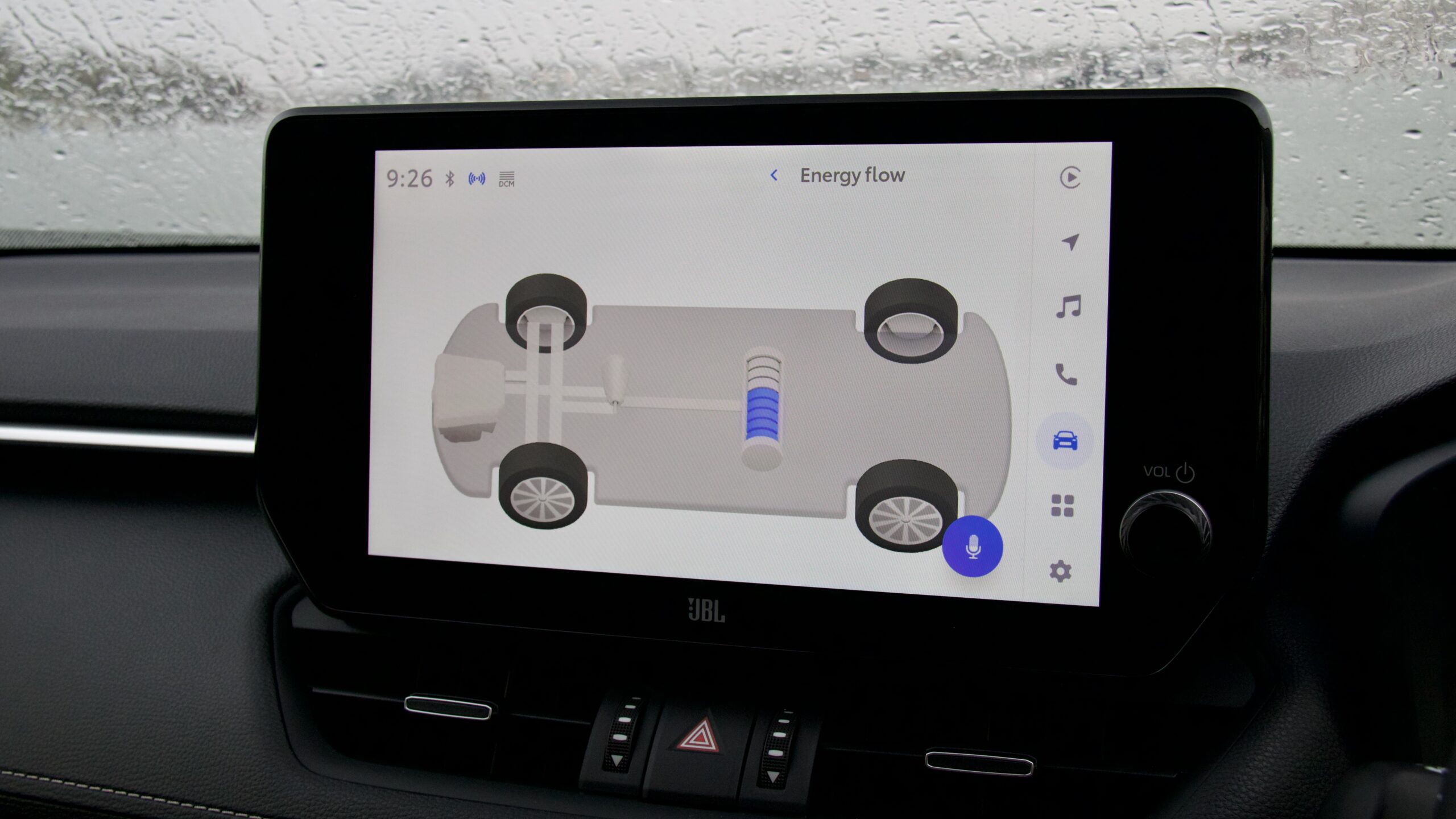
As we’ve found previously with this generation of RAV4, the 2023 Cruiser Hybrid holds the road quite well through bends and twists, and can be pushed harder than most SUV drivers ever will. It remains planted to the road taking roundabouts and corners at higher speeds than one would expect, though push a bit harder and the weight of the hybrid batteries becomes apparent with the beginnings of understeer. Still, as we say with many SUV reviews, this is not a car that’s made for punting around and we think most drivers will enjoy the comfort, mature nature and safe nature of the RAV4’s handling.
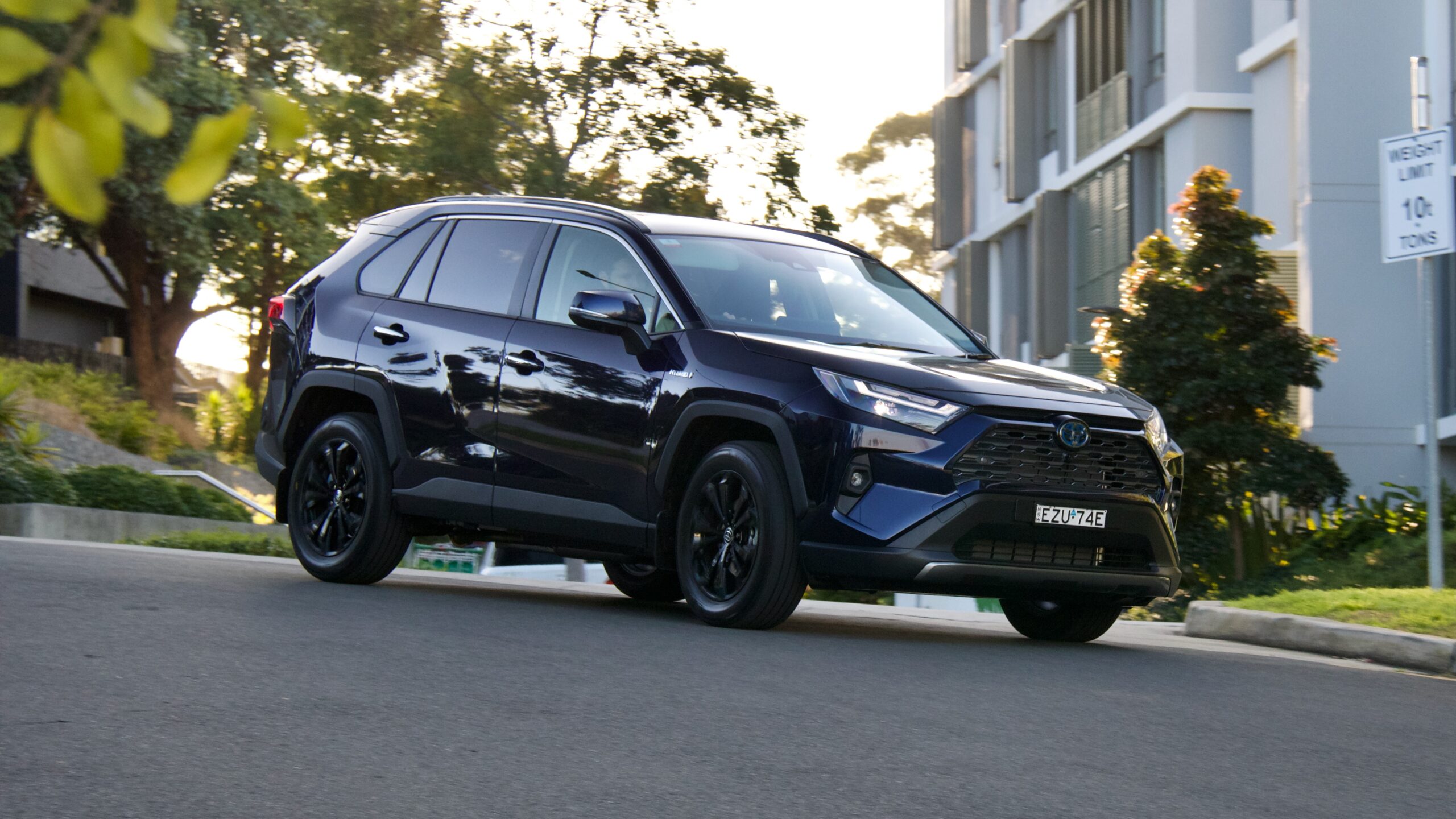
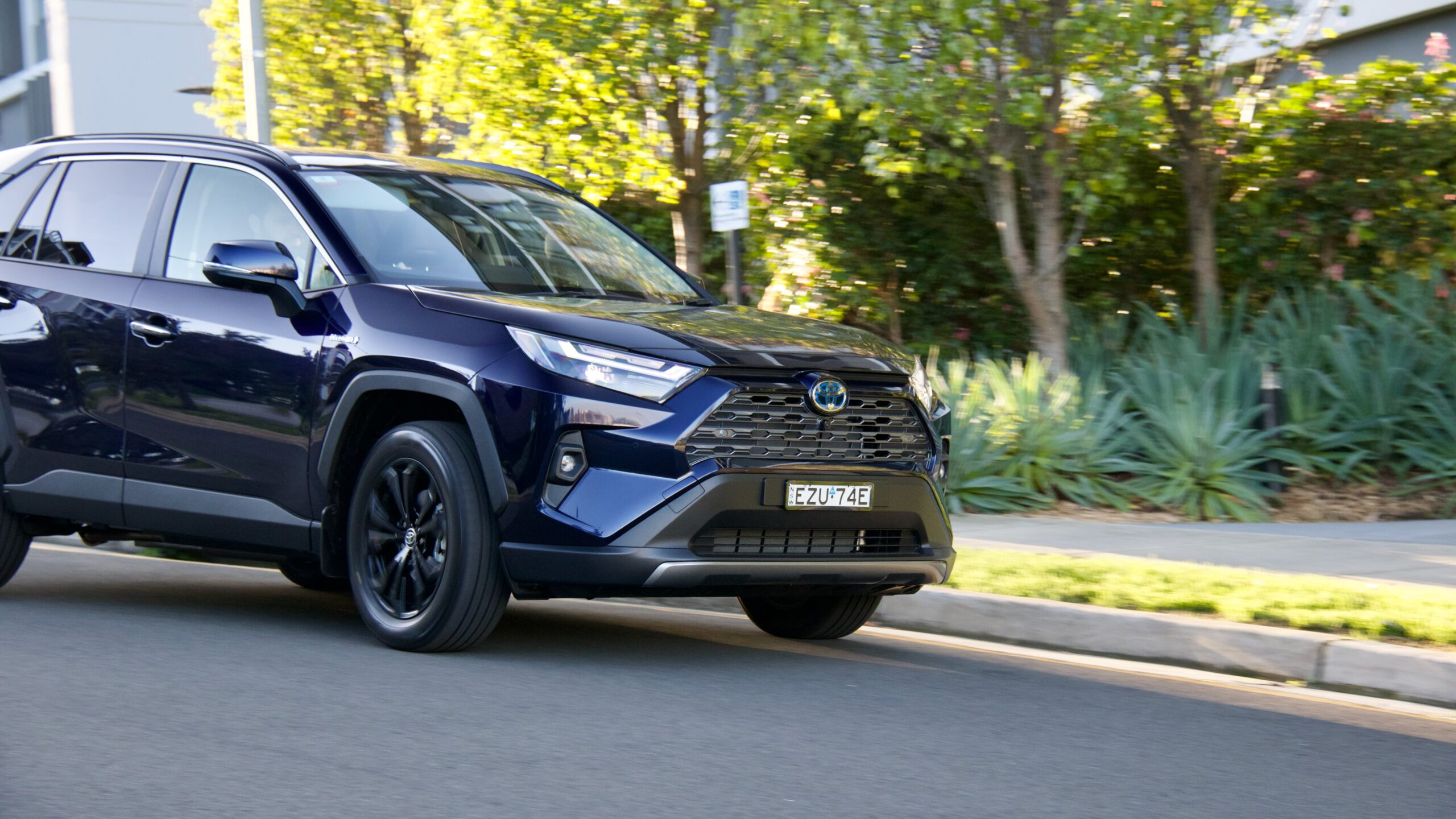
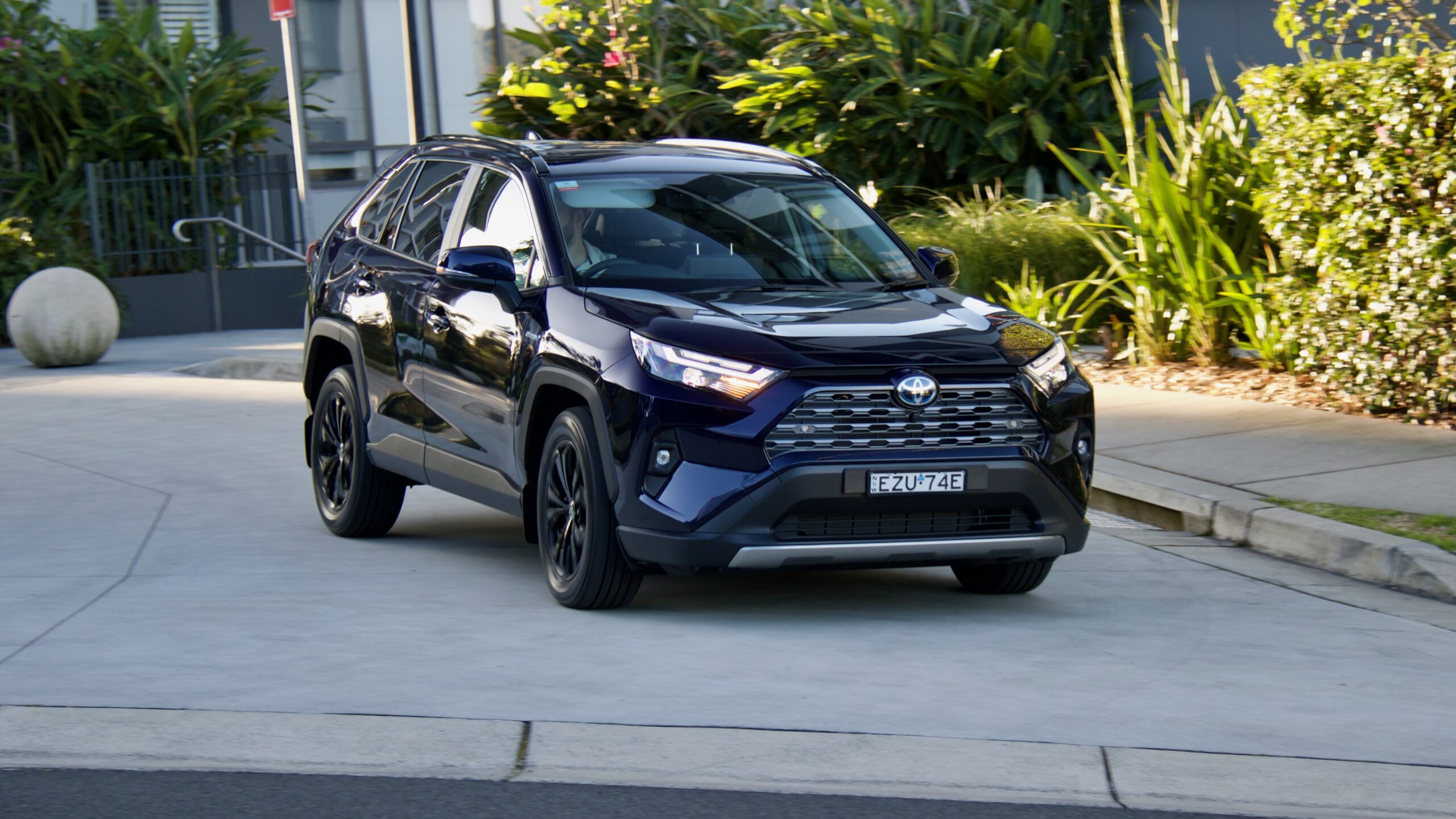
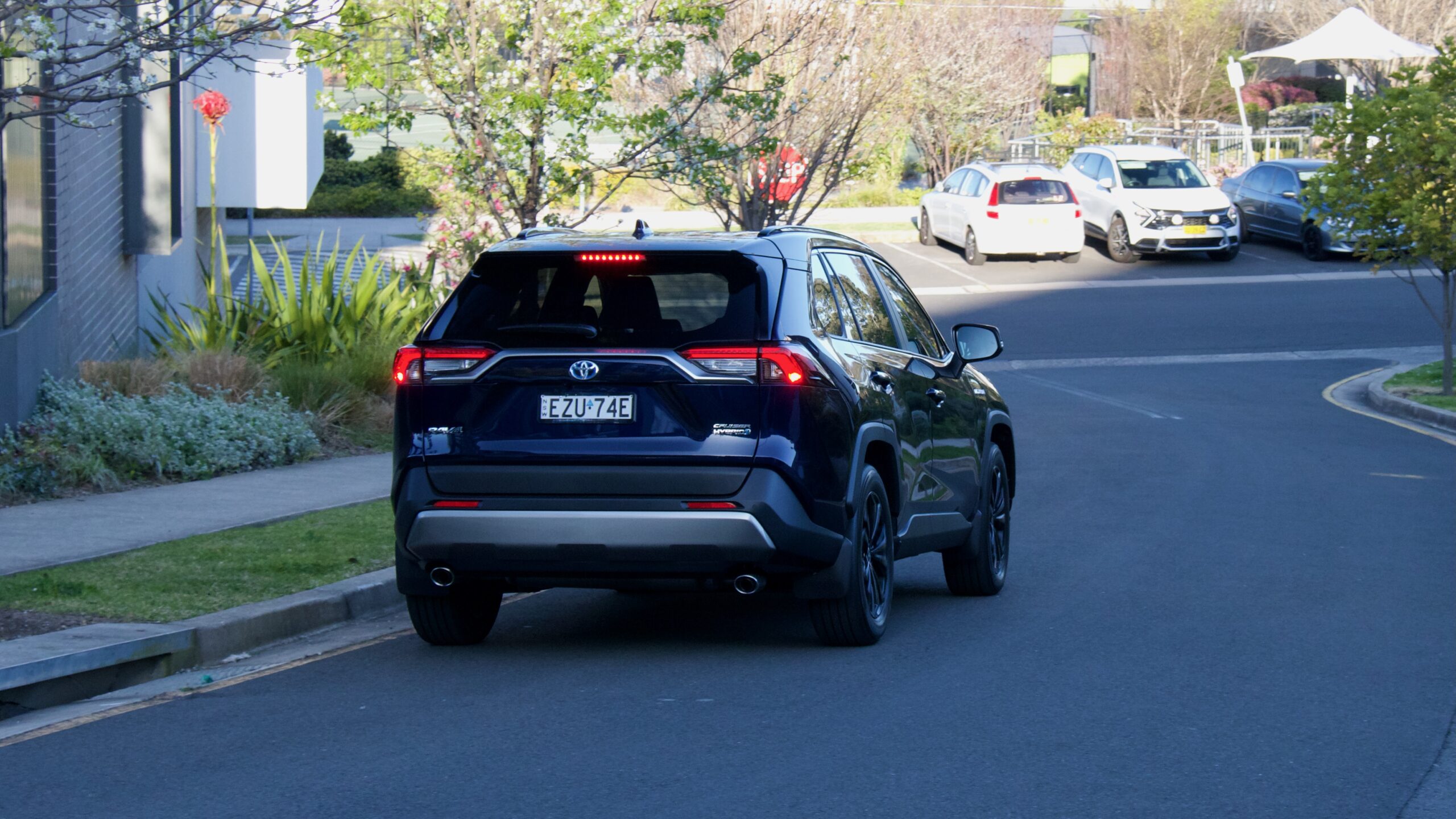
The RAV4 Cruiser Hybrid also rides well – we think the not-too large 18 inch wheels assist with this, as does the well tuned suspension. The ride is on the softer side, but still has enough connection to the road that it doesn’t boat-like. Coarse chip roads and other imperfections are absorbed well, making the RAV4 a comfortable touring car, but it’s also easy to live with around the city. Road noise is suppressed quite well, as is wind noise – though both are naturally more noticeable when the petrol engine isn’t running.
What is the interior of the 2023 Toyota RAV4 Cruiser hybrid like?
Stepping inside the RAV4’s cabin reveals are modern and pleasant space – it’s by no means at the cutting edge of cabin design, but it still a nice place to be. Material quality is good, with well padded soft touch leatherette surfaces throughout most of the common touch points in the front row. We do wish that Toyota would invest a little more into lifting the quality a bit further, because it doesn’t feel as premium as the Nissan X-Trail or other mid sized SUVs – notably the CX-5. Higher quality soft touch materials would go a long way in lifting the ambience of the space, as would more soft touch surfaces, such as the sides of the centre console or on the rear doors.
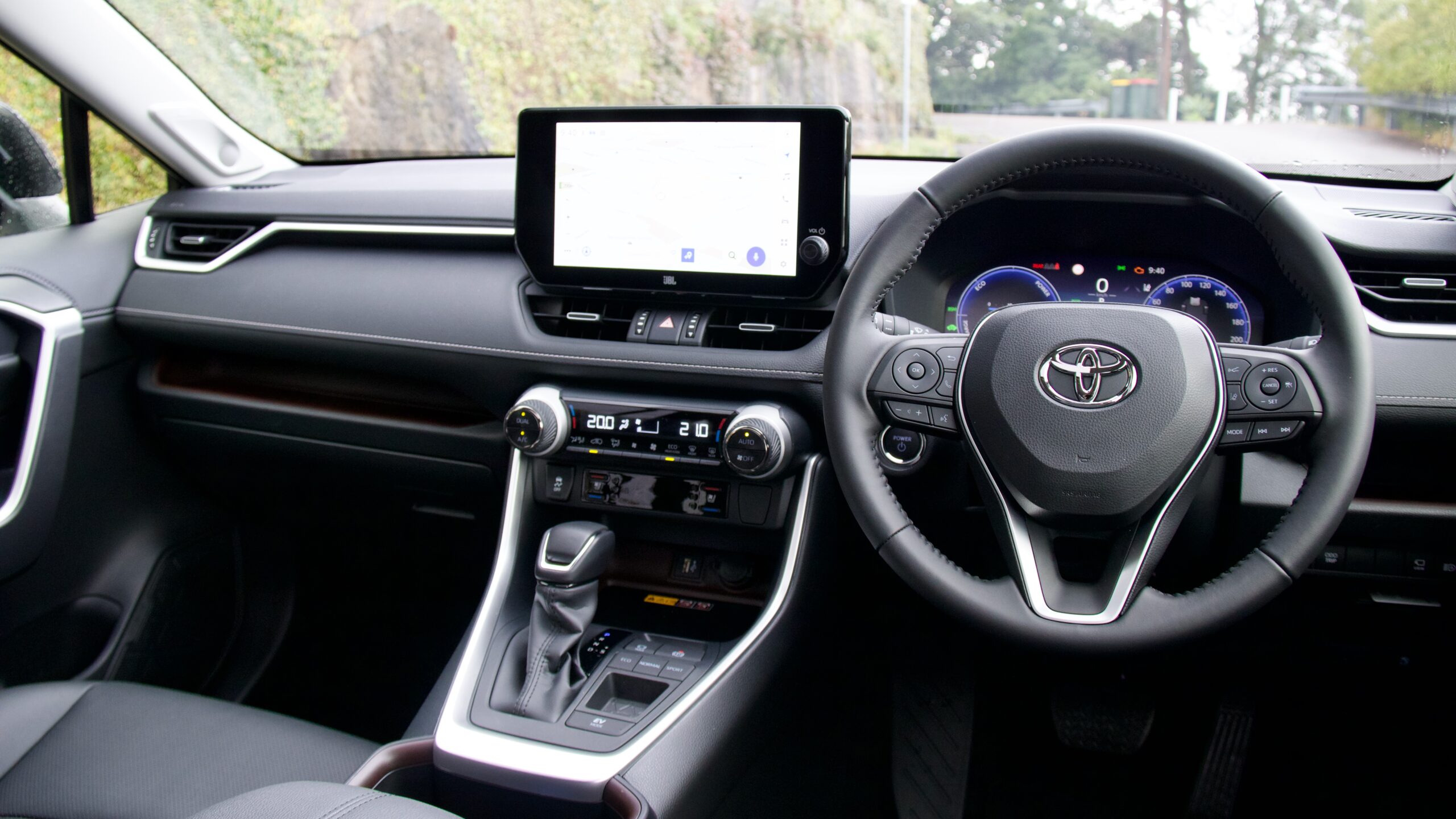
The layout of the dash is sensible and easy to use for the most part. There are simple controls for climate control and other functions which are laid out well, within reach of the driver. We do wish that some controls, such as for the 360 degree camera, were in the centre console rather than tucked to the left of the steering wheel. The automatically engaging electronic parking brake is great, and something that should be standard in all cars. There is plenty of storage throughout the cabin, with large cupholders in the centre console, a large centre console box, glovebox and door bins. The handy dash ‘shelf’ is a good place to store a phone while charging, as is the cubby ahead of the gear shifter, which doubles as a wireless charger. There are five USB charging points throughout the cabin – two USB C and one USB A ports for the front row and two USB C ports for the second row.
The seats throughout are trimmed in leather which feels nice to the touch and is comfortable to sit on. The front seats are comfortable with good bolstering and support – they’re easy to do longer stints of driving in. The driver’s seat features 10 ways of powered adjustment, making finding a comfortable position easy. The passenger also has plenty of ability to find a good position with eight ways of powered adjustment and both seats benefit from the large padded centre armrest, in addition to ventilation for hot summer days and heating for freezing mornings. The driving position is good, with good vision all around – the high quality 360 degree camera and reversing camera further aid visibility – as does the digital rearview mirror when a packed boot or bike trailer (for example) is blocking rear visibility.
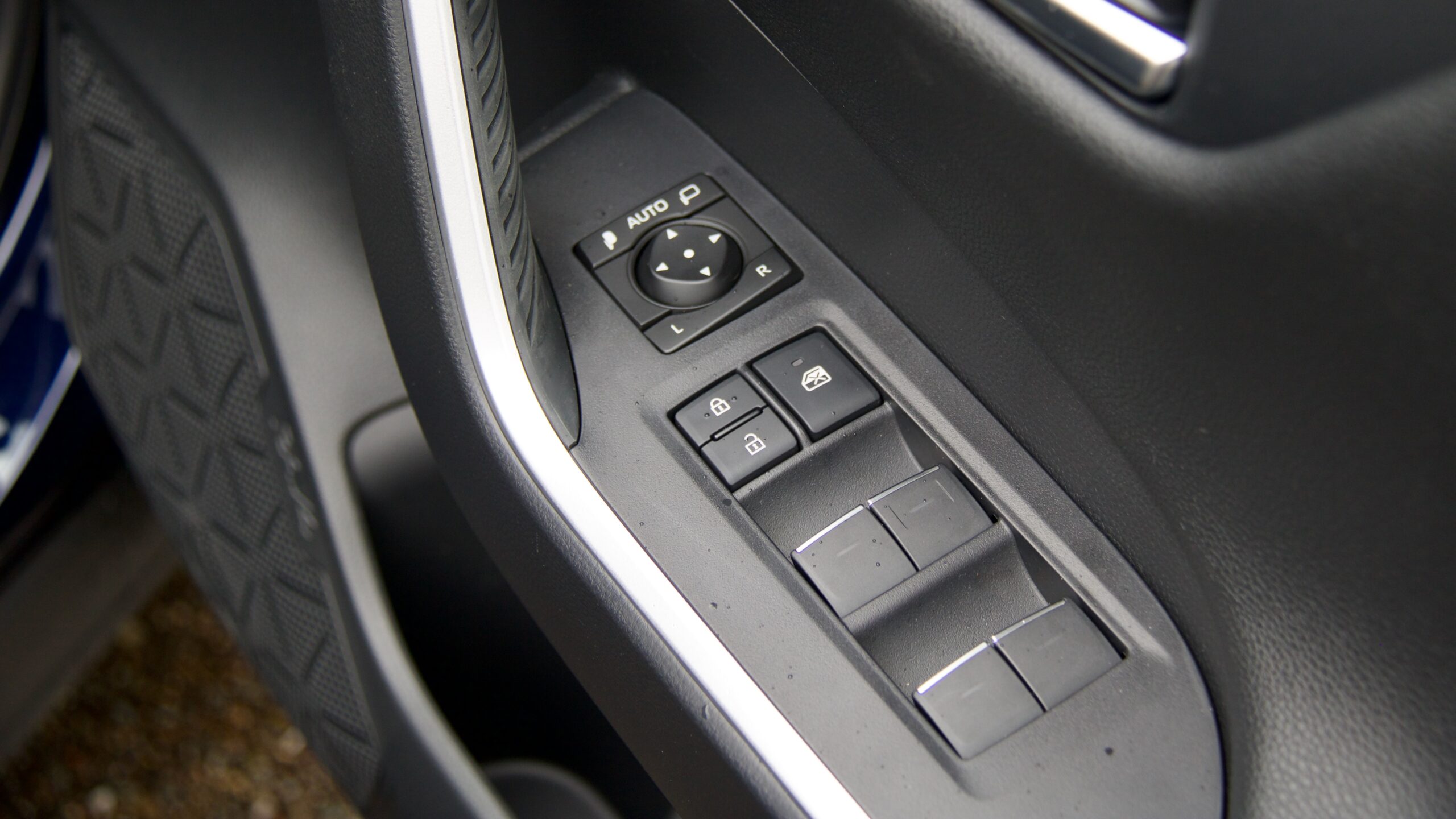
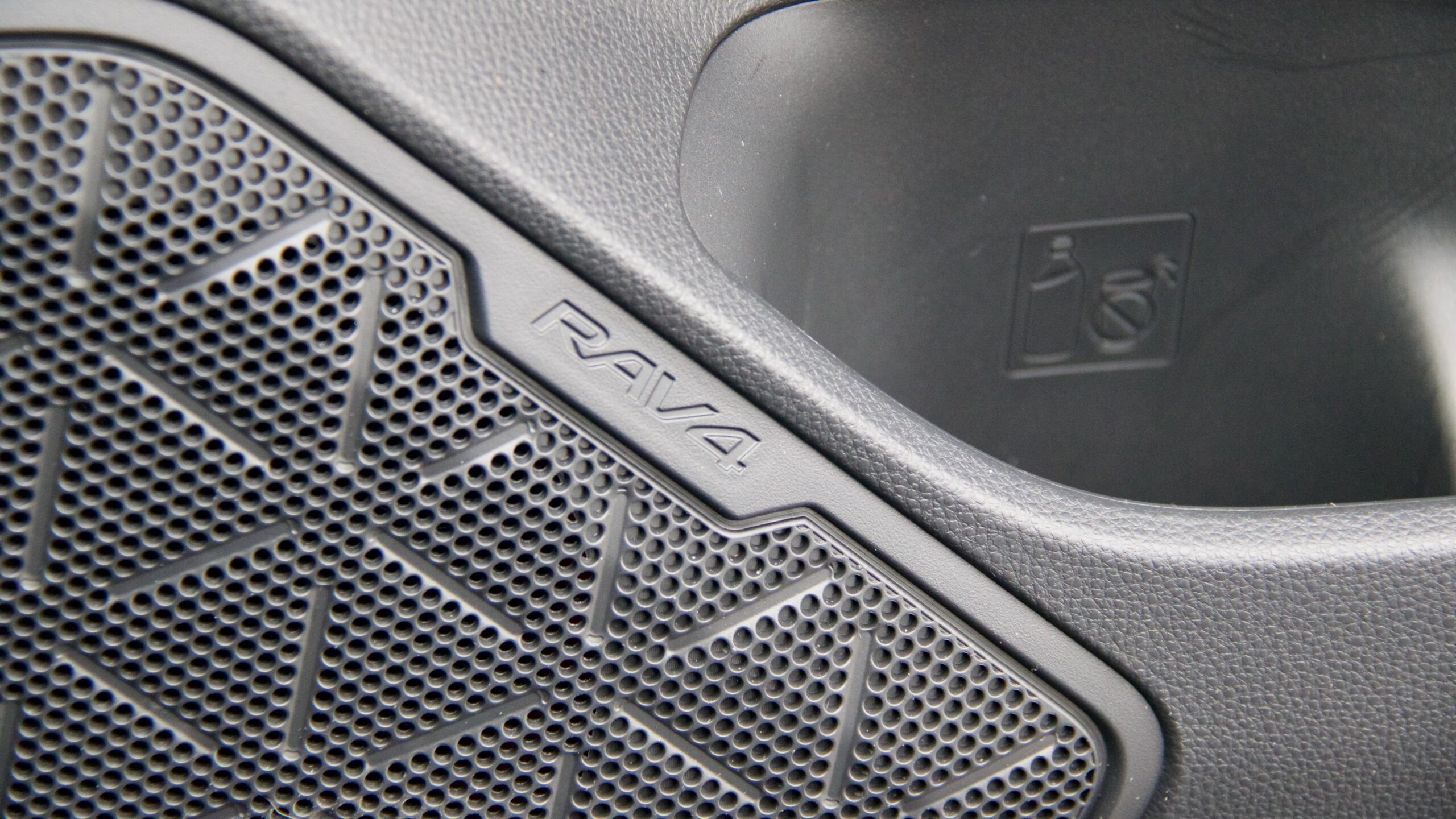
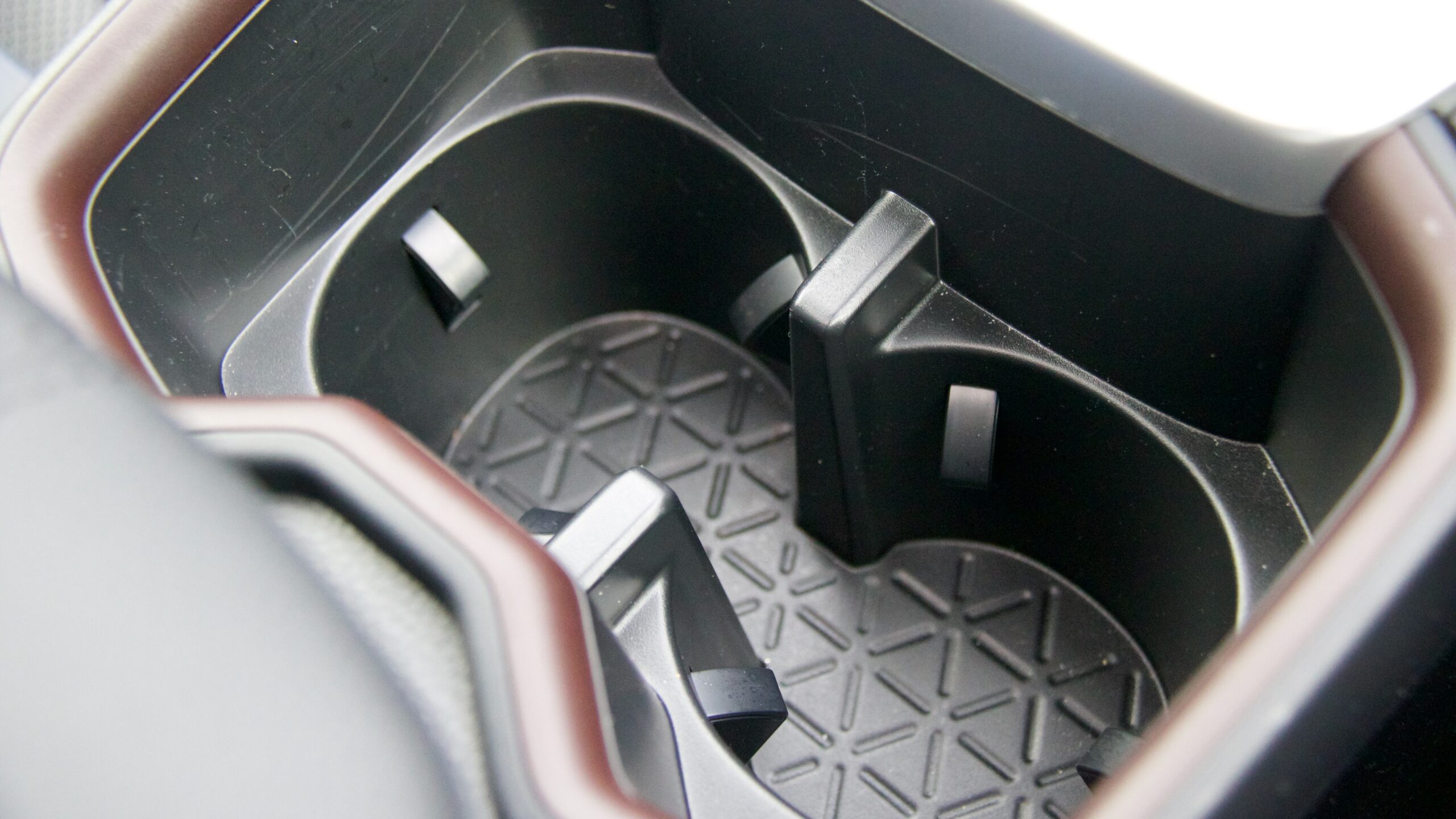

Ahead of the driver is a fully digital instrument cluster – one of the major additions to the MY23 model and it really does a great job at modernising the interior – the old semi digital cluster did the job, but was starting to feel dated. The screen itself is clear and features fluid animations. While not quite up to the Volkswagen Group gold standard of digital instrument clusters, Toyota has done a good job. Drivers are able to customise the screen to an extent through choosing content and by changing the theme.
Sitting centred atop the dash is a new 10.5-inch touchscreen running Toyota’s next generation infotainment software – the other major update of the current of the current RAV4 model. Like we’ve seen in other recently updated Toyotas, the new system is a night and day improvement over the old system. The display being larger is a bonus, but it’s really the improved resolution and fluidity combined with the new software which make all the difference. Gone are the outdated menus and fuzzy resolution of the old screen, which further assists in bringing the cabin into 2023.
Unfortunately, though Toyota has retained a dial for the volume, the rest of the physical controls for the infotainment system have disappeared. We think this is a step back in usability – the now banished shortcut buttons allowed easy access to functions of the screen without being distracted digging through menus on the touchscreen. The reversing camera and 360 degree camera systems have been upgraded alongside the new screen, and are now excellent in quality – they’re sharp and lag free and the 360 degree camera renders the panoramic view very well. It’s a night and different to the old fuzzy cameras that Toyota used.
Moving into the second row of the RAV4 reveals a spacious rear seat, with the two outbound seats having plenty of leg, knee and headroom. Four adults can travel in the RAV4 for long distances with ease. The centre seat is a bit pokey, with the prominent transmission tunnel cutting into legroom, and a narrower seat base, but it’s fine for shorter adults on shorter trips, or for children. Amities in the second row include air vents, the aforementioned two USB C charging points, door bins, map pocket on the back of the passenger seat (though annoyingly, not the driver) and a centre armrest with cup holders.
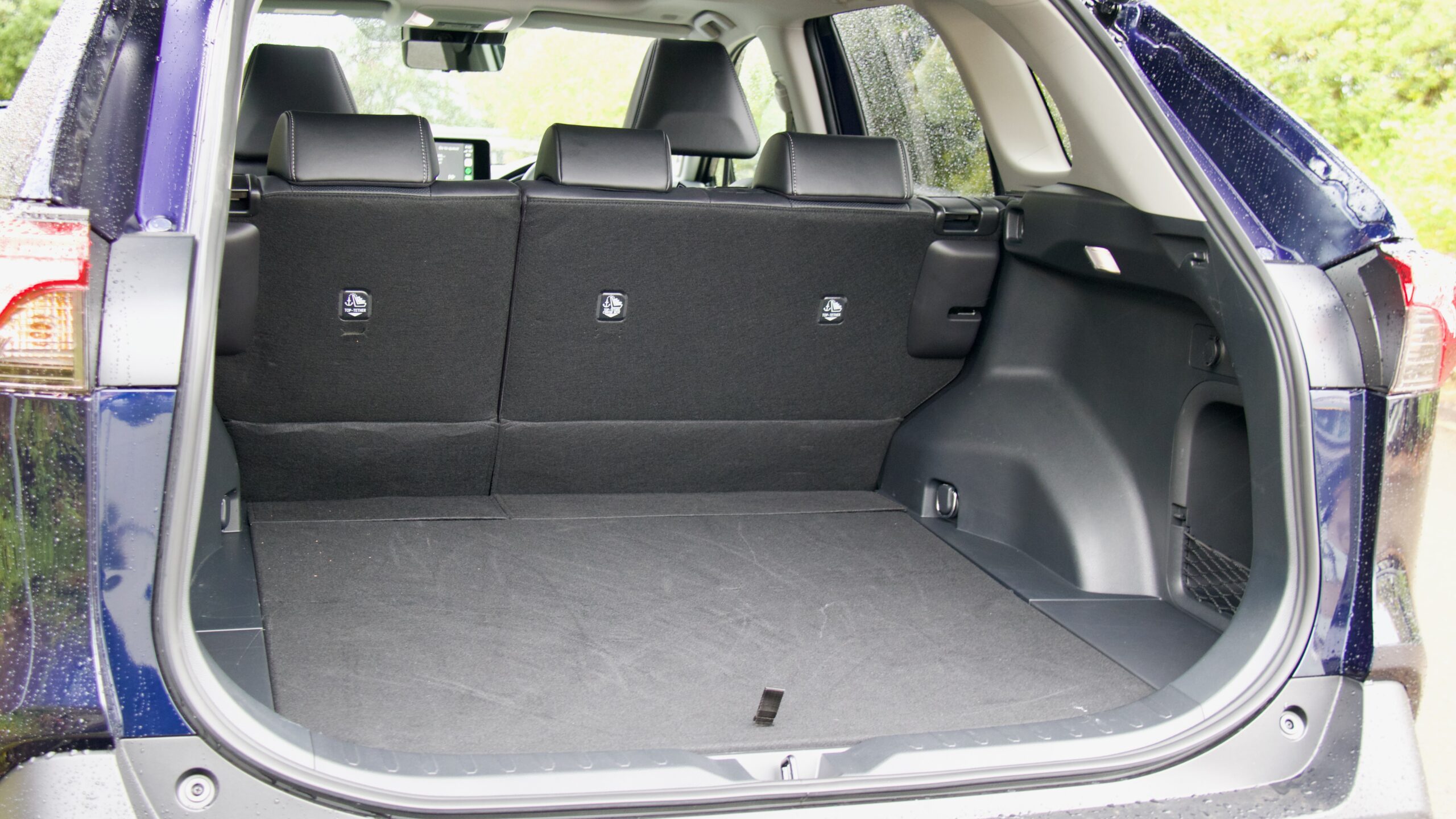
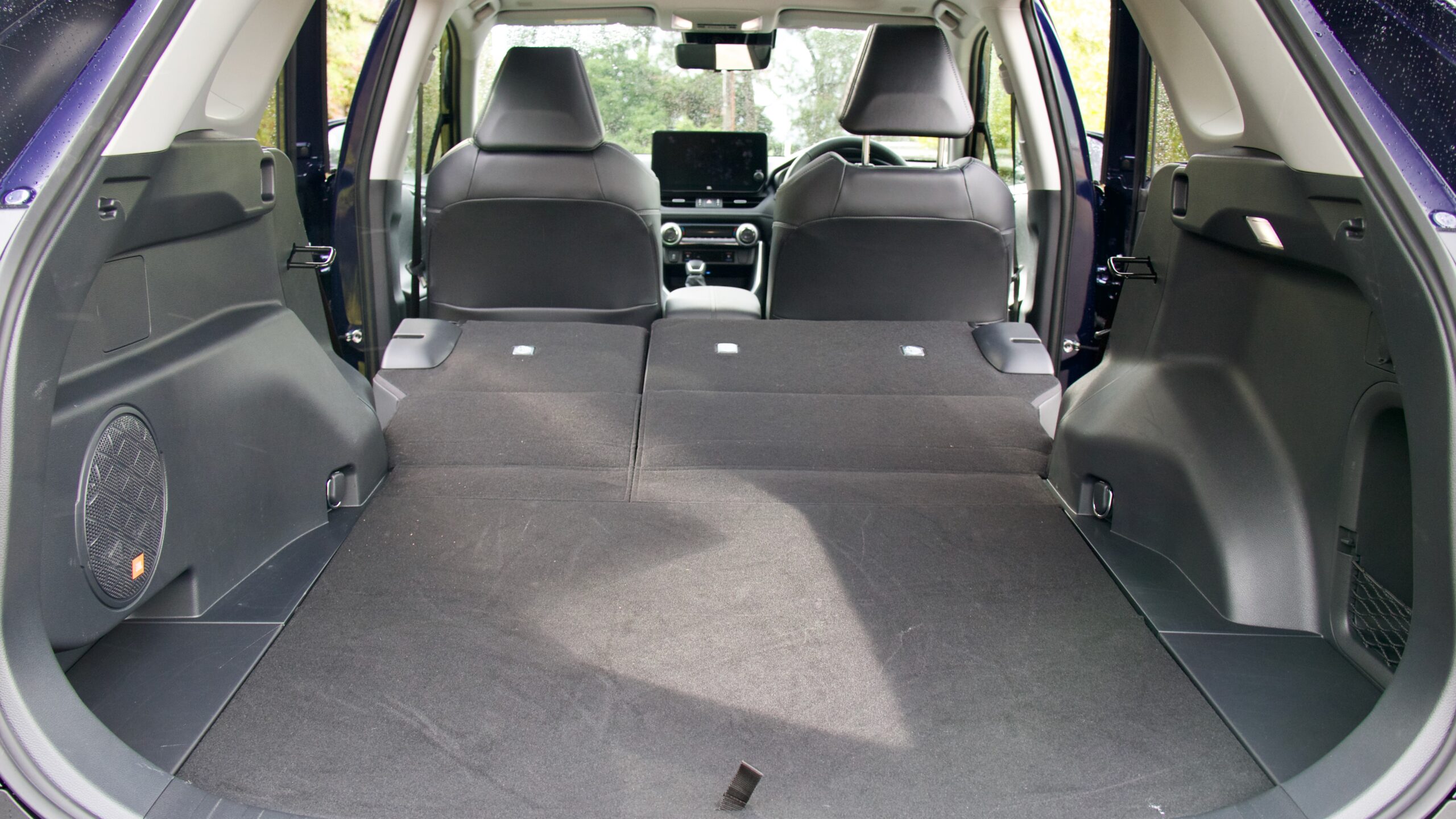
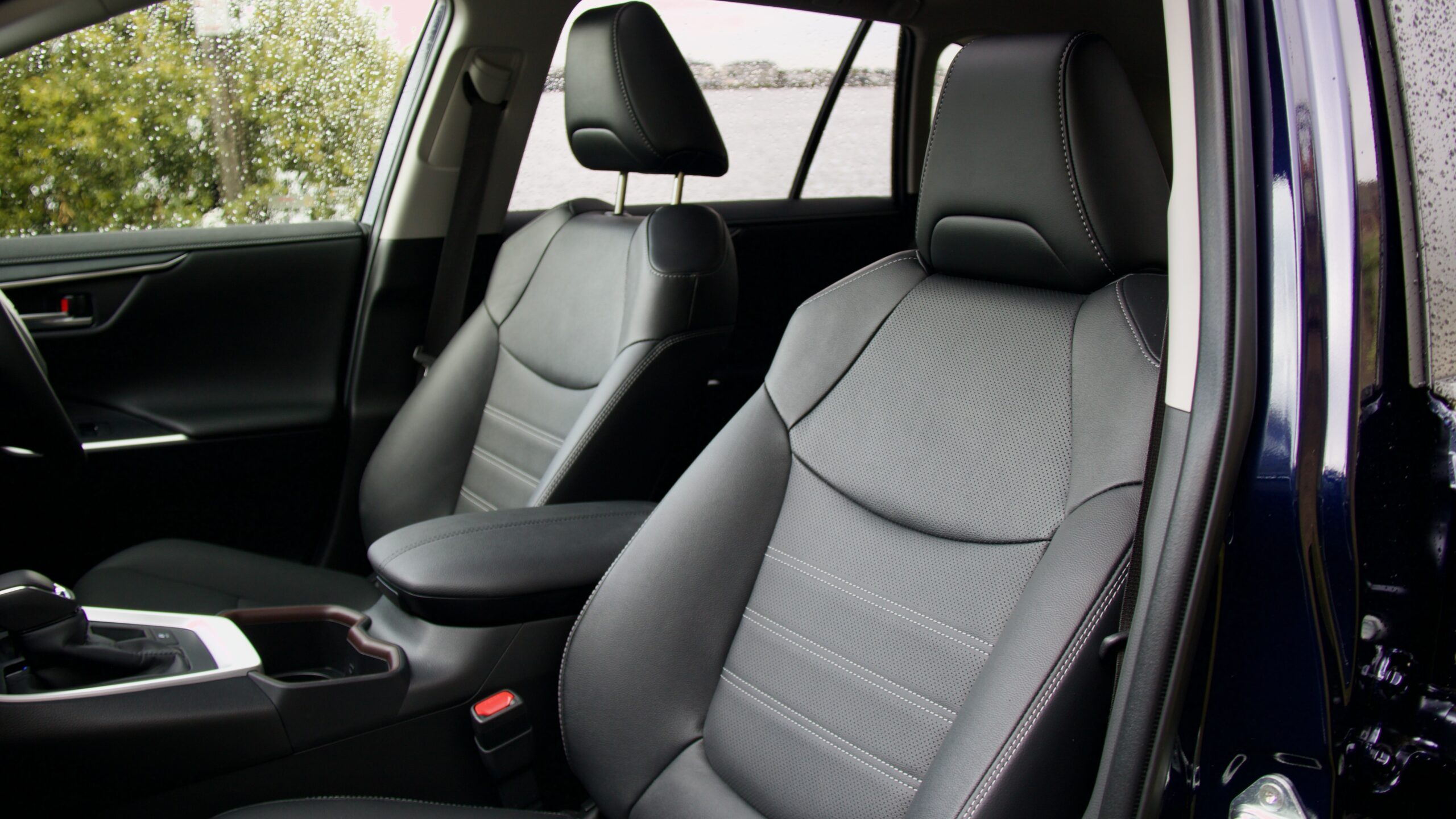
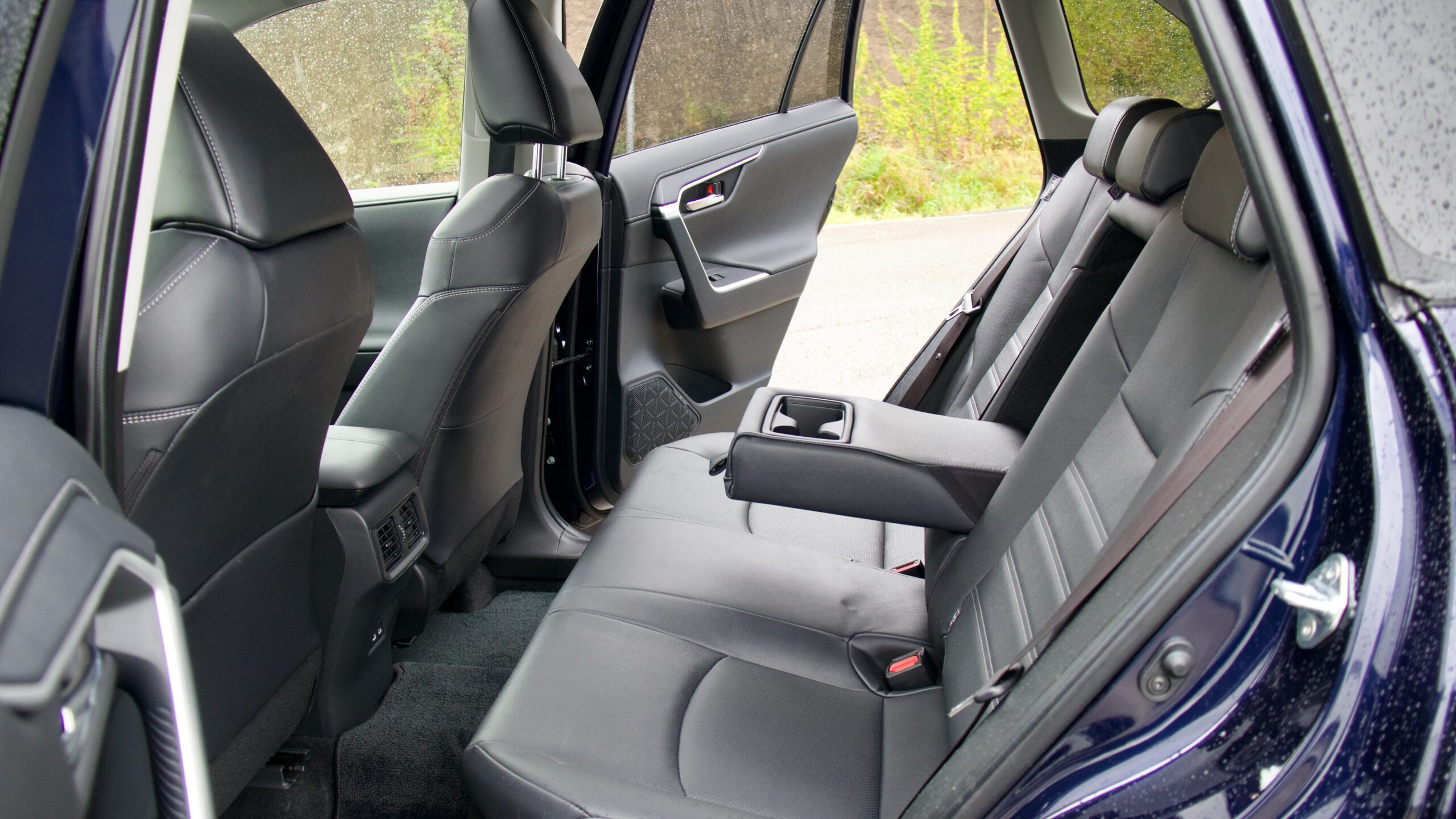
Opening the powered tailgate reveals 580-litres of space with all five seats in place, expanding to a large 1,690L with the second row folded. The boot floor sits in two positions – raising it to the higher position creates a false floor with extra hidden storage space below, reducing the overall boot capacity to 542L. The boot floor is also reversible – one side is carpeted and the other is hard and textured to be washed off. Besides hooks to tie cargo down, there isn’t too much more in the way of clever boot features. Below the boot floor sits a space saver spare – we’d prefer a full-sized spare, but it’s better than nothing.
Service & Warranty: 9/10
Toyota covers the 2023 Toyota RAV4 Cruiser 2WD Hybrid with a five-year/unlimited kilometre warranty, which extends to seven years for the drivetrain if servicing and maintenance is carried out to the service logbook’s requirements and the hybrid battery receives a 10-year warranty as long as an annual hybrid battery health check is undertaken. Both the X-Trail and CR-V also have five-year/unlimited kilometre warranties and they have eight-year/160,000km hybrid battery warranties. Toyota doesn’t include any roadside assistance with the RAV4, charging $99 a year for its roadside assistance – Honda and Nissan both include five years of roadside assistance.
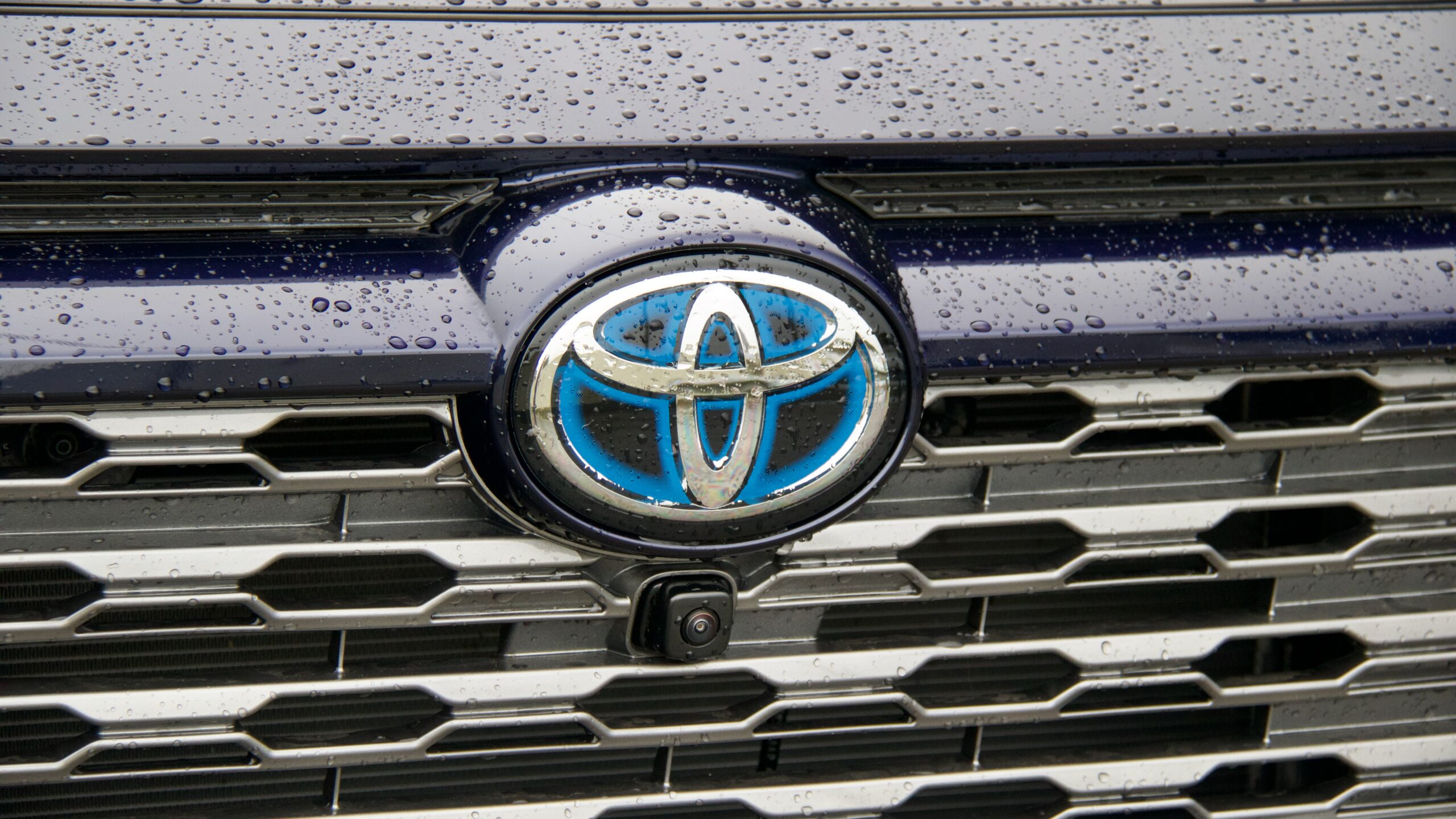
The RAV4 requires servicing every 15,000km or 12 month (whichever comes first) – the CR-V and X-Trail have the same 12 month interval, but with a shorter 10,000km distance between services – so CR-V and X-Trail drivers who do higher kilometres will require more frequent servicing than the RAV4. Five years/75,000kms of capped price servicing in the RAV4 comes to a total of $1,300 – it’s undercut by the CR-V, which costs just $995 to service over five years/50,000kms, but is significantly cheaper than the X-Trail which costs $2,353 over the same 5 years/50,000kms.
Should I buy a 2023 Toyota RAV4 Cruiser hybrid 2WD?
We came away from our week with the 2023 Toyota RAV4 Cruiser 2WD Hybrid with a similar conclusion to previous year models we’ve tested – it’s a car that does pretty much everything well. The MY23 updates have made quite a big difference in keeping the RAV4 feeling up to date tech-wise, with almost every bit of technology that the driver interacts with getting a much-needed update – the new infotainment screen and software are a big improvement, as is the digital instrument cluster, new microphones and the reversing/360 degree cameras. The RAV4 is still the class leader in non plug-in-hybrid efficiency in its segment, with such a low real world fuel consumption figure. Besides in the drivetrain department, the RAV4 isn’t really the class leader in other areas, but it still manages to do pretty much everything consistently well, without being the best.
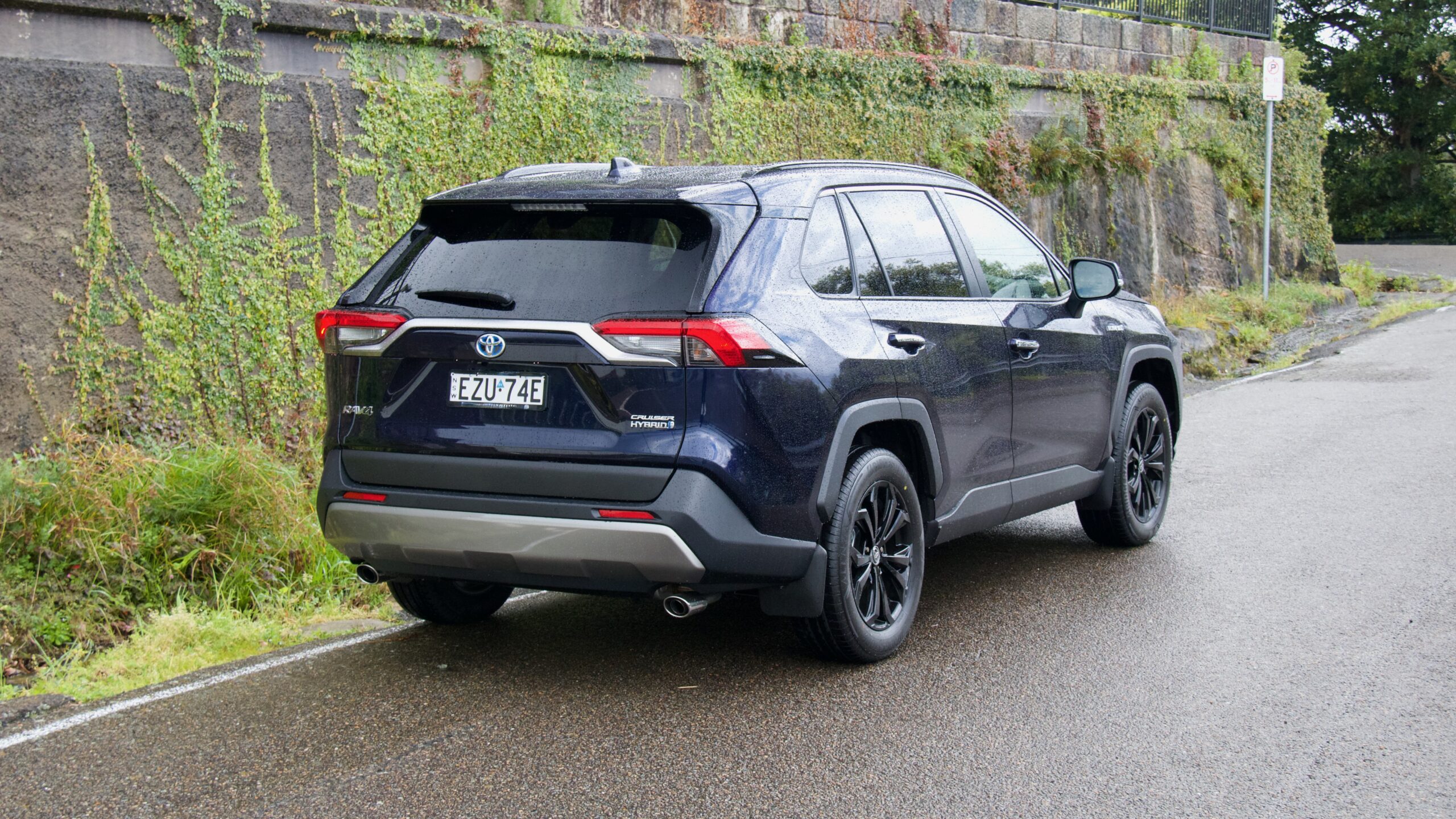
That’s not to say it’s without fault – we really wish Toyota put a bit more effort into making the interior plusher with better quality materials, there is a bit of equipment missing, we think Toyota should have moved to a lithium-ion battery by now and things get a little unrefined on heavy acceleration, on top of the gradual price creep which has pushed the RAV4 Cruiser hybrid closer to $60k than $50k. Is it worth the wait? Maybe – it really depends on each buyer’s priorities and preferences. Those who don’t mind higher fuel usage will probably see the value of the X-Trail or CR-V, or even a standard petrol mid-sized SUV, but for those who aren’t in a hurry for a new car and can wait, we think the RAV4 is a very compelling vehicle.
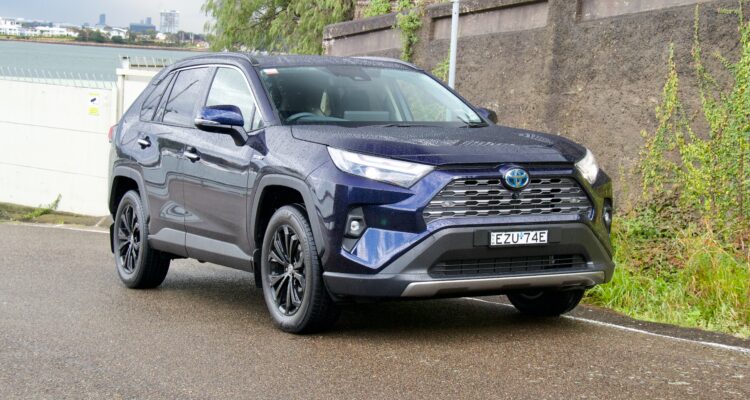
Leave a Reply